

Cruise Itineraries
The Atlantic Intracoastal Waterway (AICW), referred to as the “Ditch,” is the most common and popular route for boaters cruising from the Chesapeake Bay to Florida. Officially the AICW starts in Norfolk, VA and ends in Key West, FL. Explore the best that marinas along the Atlantic ICW have to offer with Marinalife’s pre-planned cruise itineraries!
America's East Coast Small Ship Cruises
America’s East Coast offers a diverse and enriching cruise experience, with itineraries that range from the sunny shores of Florida to the historic ports of New England and the maritime beauty of Canada. Here’s an overview of what you might expect on an East Coast cruise:
Southern Charm and Sunshine
- Florida: Many cruises along the East Coast kick off from Florida’s vibrant ports such as Miami, Fort Lauderdale, or Port Canaveral. Key West is the southernmost point of the continental U.S. is famous for its laid-back atmosphere, historic sites like Ernest Hemingway’s home, and the vibrant Duval Street.
Historic Seaports and Cities
- Charleston, South Carolina : Known for its well-preserved architecture, rich history, and hospitable people, Charleston is a favorite stop. Visitors can explore the historic district, visit Fort Sumter, or enjoy the local cuisine.
- Savannah, Georgia : Similar to Charleston, Savannah offers a glimpse into the South’s Antebellum past with its beautiful public squares, moss-draped oaks, and restored historic homes.
Mid-Atlantic Marvels
- Baltimore and Annapolis, Maryland : These ports offer access to American naval history and the charms of Chesapeake Bay. Annapolis, with its historic Naval Academy, and Baltimore’s Inner Harbor are highlights.
- Washington, D.C. : Some itineraries may include a stop or excursion near the nation’s capital, where passengers can visit iconic sites like the Smithsonian museums, the National Mall, and U.S. Capitol.
New England Elegance
- Boston, Massachusetts : The cradle of American independence, Boston offers historical tours along the Freedom Trail, visits to the USS Constitution, and the modern attractions of the bustling Seaport District.
- Newport, Rhode Island : Famous for its Gilded Age mansions and the America’s Cup yacht race. The Cliff Walk and tours of palatial homes like The Breakers offer glimpses into the opulent past of American high society.
Canadian Connections
- Halifax, Nova Scotia : This friendly maritime city offers rich history, including connections to the Titanic disaster and the 1917 Halifax Explosion. The rugged coastal beauty and the historic Citadel Hill are must-sees.
- Saint John, New Brunswick : Known for the reversing falls and close to the Bay of Fundy, which boasts the world’s highest tides. Nature excursions and seafood culinary experiences are plentiful here.
Seasonal Spectaculars
- Fall Foliage Cruises : These cruises are particularly popular for their stunning views of autumn’s vibrant colors along the New England and Canadian coastlines. Ports like Bar Harbor, Maine, offer access to Acadia National Park and its spectacular natural beauty.
America’s East Coast cruises cater to a wide range of interests, from sun-seekers and history buffs to nature lovers and foodies, making it a versatile and rewarding cruising destination.
America's East Coast Cruise Itineraries
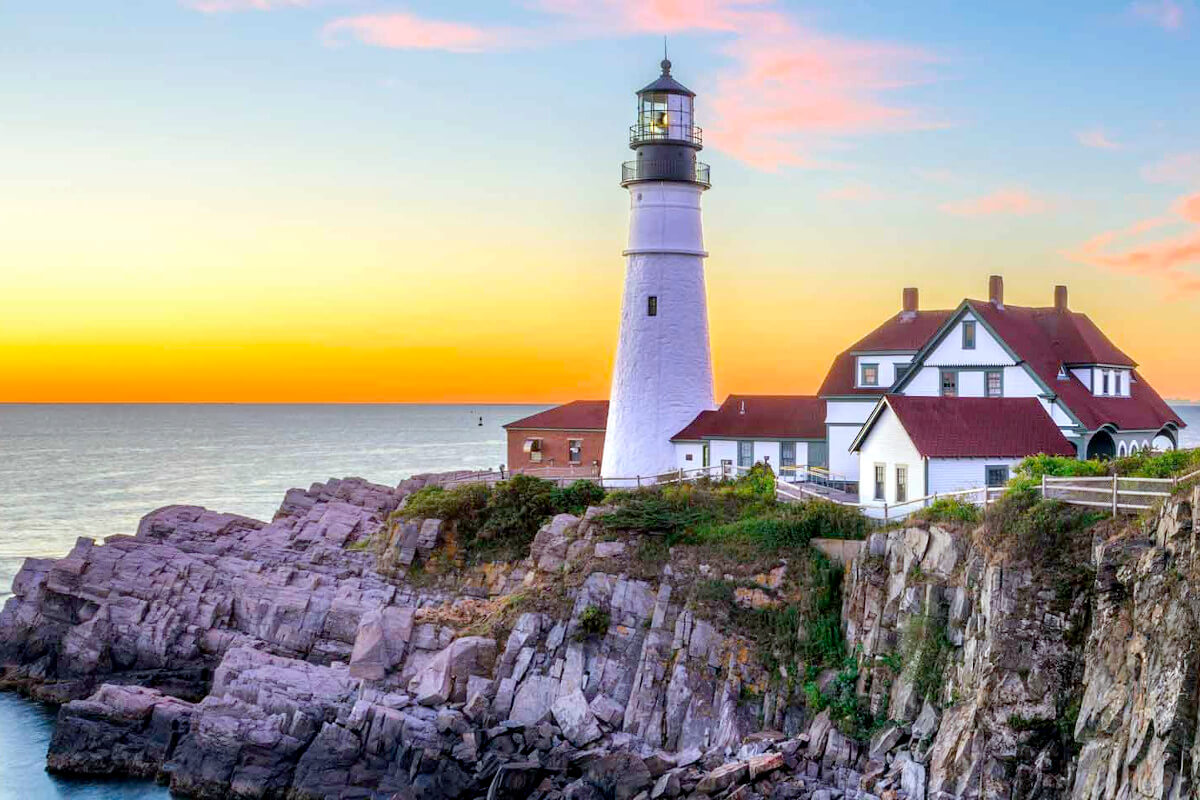
Maine Coast and Harbors Cruise
On this 8-day Maine Coast and Harbors Cruise sailing roundtrip from Portland, ME, travel to charming ports famous for their shipbuilding, as well as to beautiful national parks with magnificent views and abundant wildlife. Explore quaint historic districts and charming villages, and dine on the freshest, locally sourced seafood prepared by our team of master chefs.
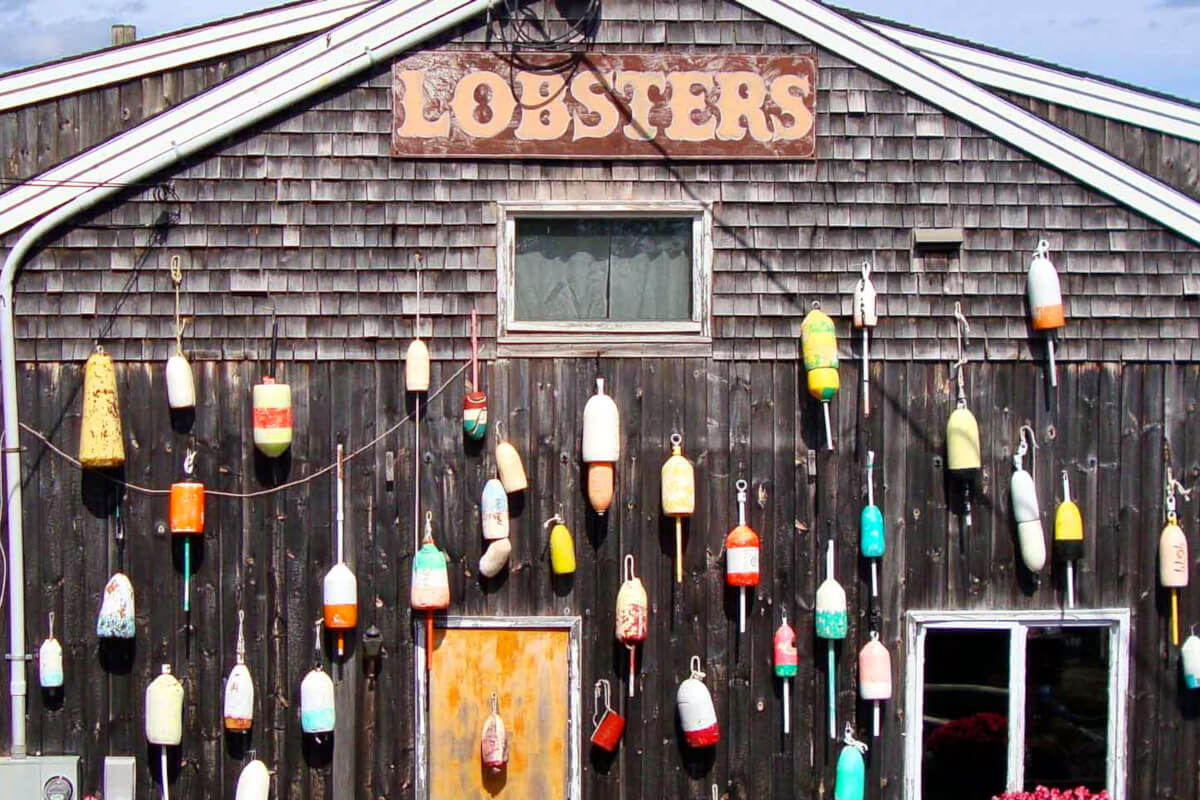
New England Islands Cruise
On this 8-day New England Islands cruise sailing roundtrip Providence, RI aboard the 90-passenger American Star and 100-passenger American Liberty , immerse yourself in the rich history and culture of New England, from New Bedford, MA, once known as the whaling capital of the world, to Newport, RI, home to mansions of the Gilded Age.

Grand New England Cruise
On this 15 Day Grand New England Cruise aboard the 100-guest American Glory , travel along the picturesque waterways of New England that tell the story of American history, from the Mayflower’s landing to the Boston Tea Party. A centuries-old shipbuilding tradition lives on here in shipyards along the shoreline and schooners that adorn the harbors.
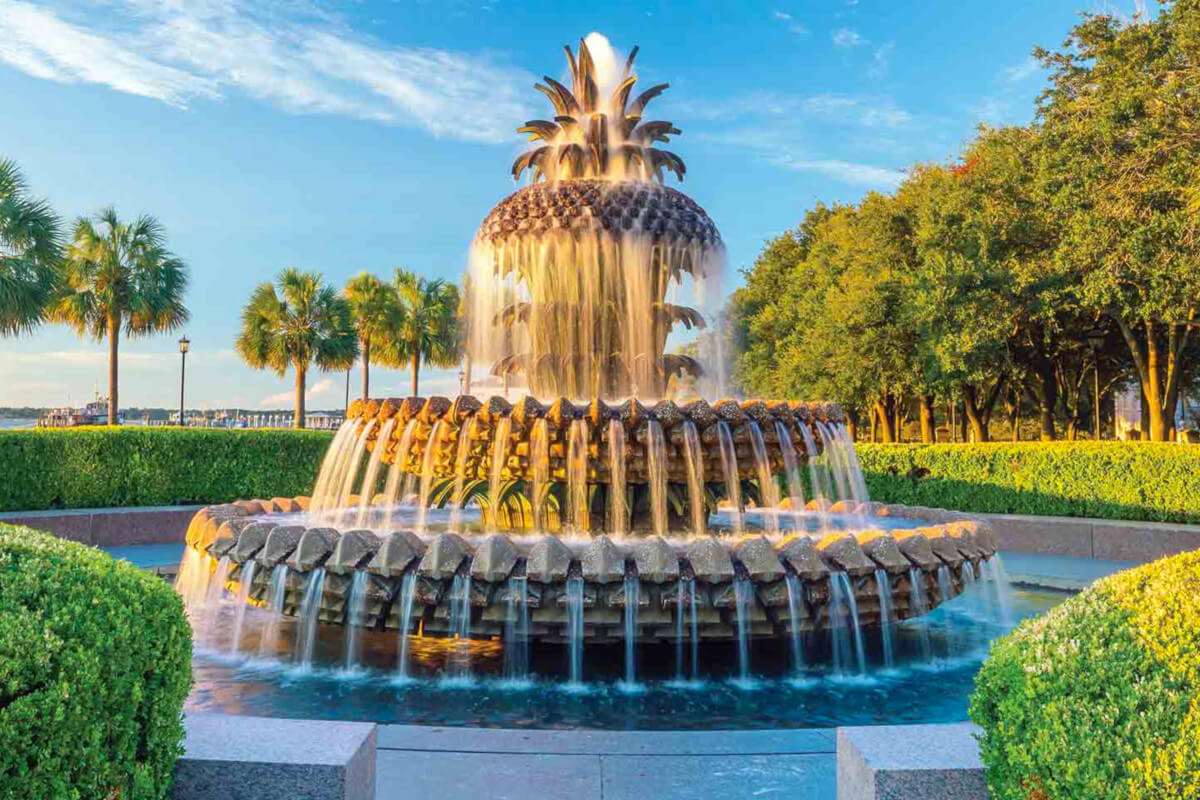
East Coast Inland Passage Cruise
On this 15-day East Coast Inland Passage cruise sailing between Jacksonville/Amelia Island, FL and Baltimore, MD, cruise through a rich past that has influenced our country since the days of early exploration.

Great Rivers of Florida Cruise
On this epic 8-day Great Rivers of Florida cruise sailing roundtrip Jacksonville, FL, explore the charming towns, impressive wildlife, and native scenery on this exciting river cruise through northern Florida.
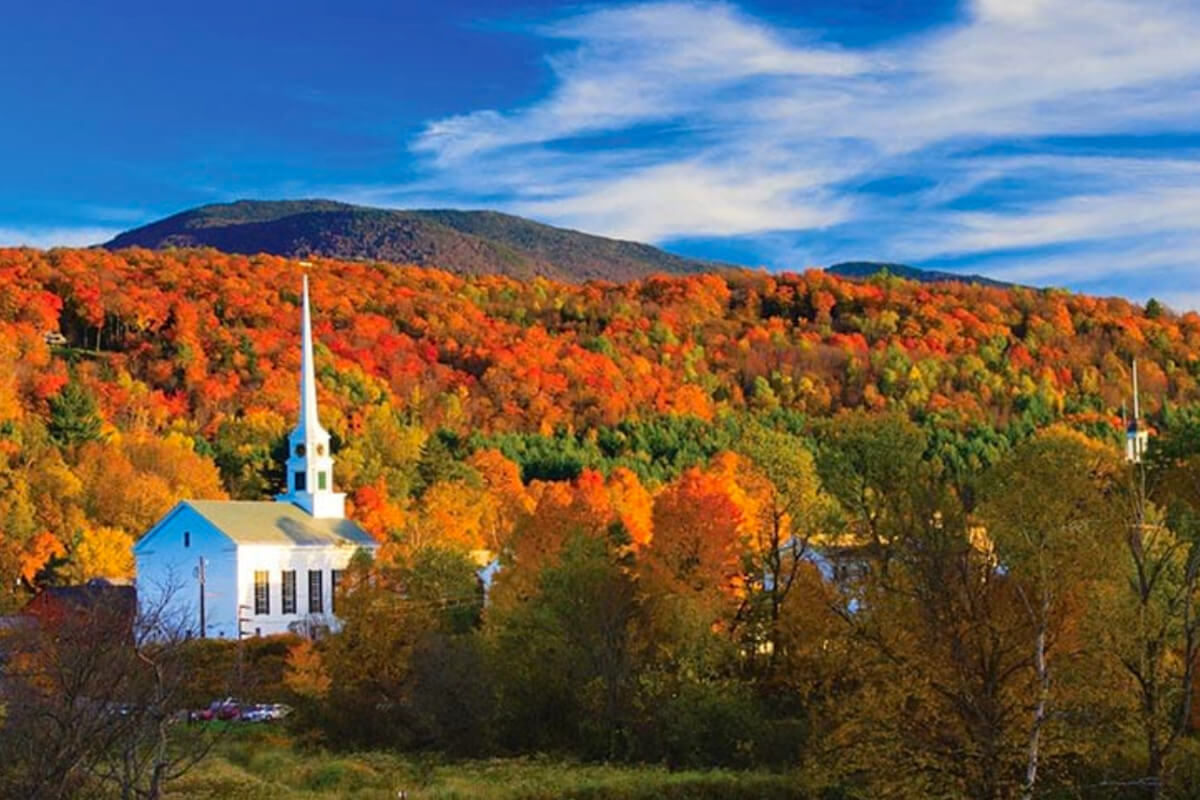
Hudson River Fall Foliage Cruise
On this 8-day Hudson River Fall Foliage Cruise sailing roundtrip New York City, NY, delight in the kaleidoscope of colors on this enchanting journey along the Hudson River. Witness the rich reds, bright oranges, and golden yellows that flood its shores during the vibrant autumn season.
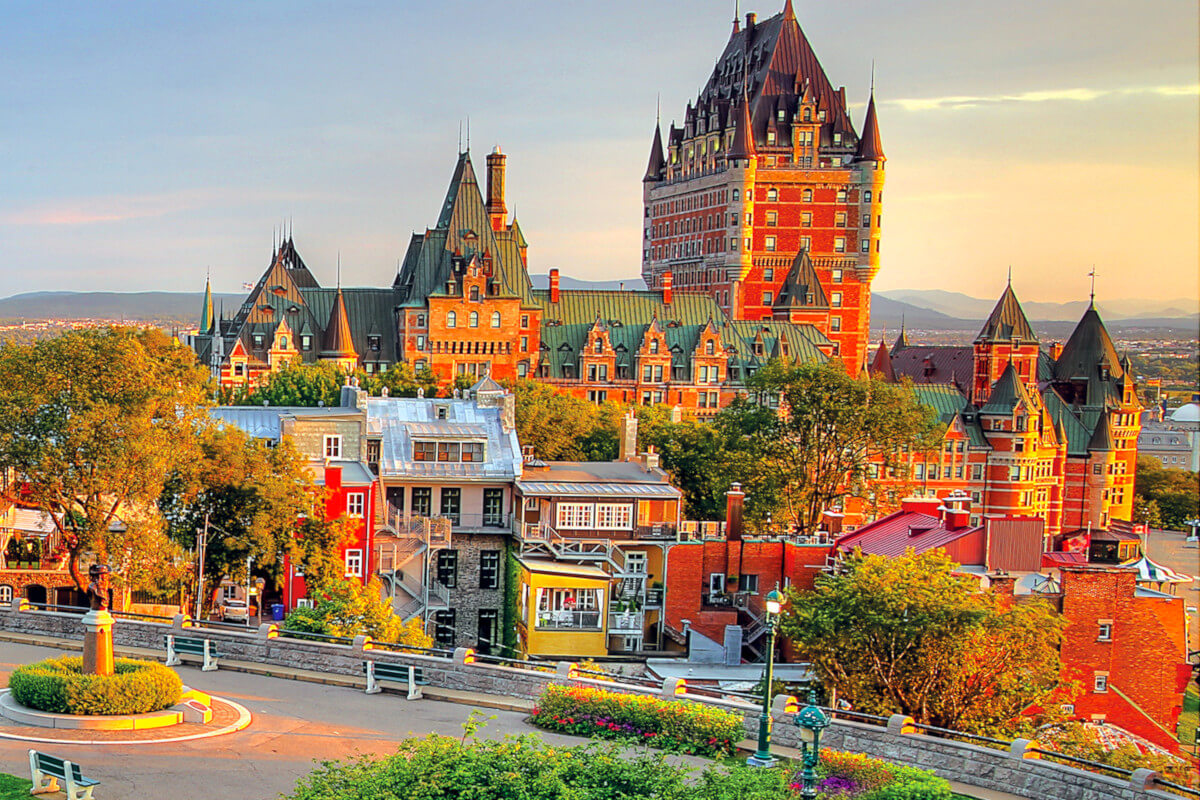
Canada and New England Fall Foliage
On this captivating 11-day Canada and New England Fall Foliage cruise between Portland, ME and Quebec City, QC aboard the Pearl Mist , discover the most sought-after Canadian locations, as well as many of Pearl Seas Cruises favorite colorful destinations along the New England coast.
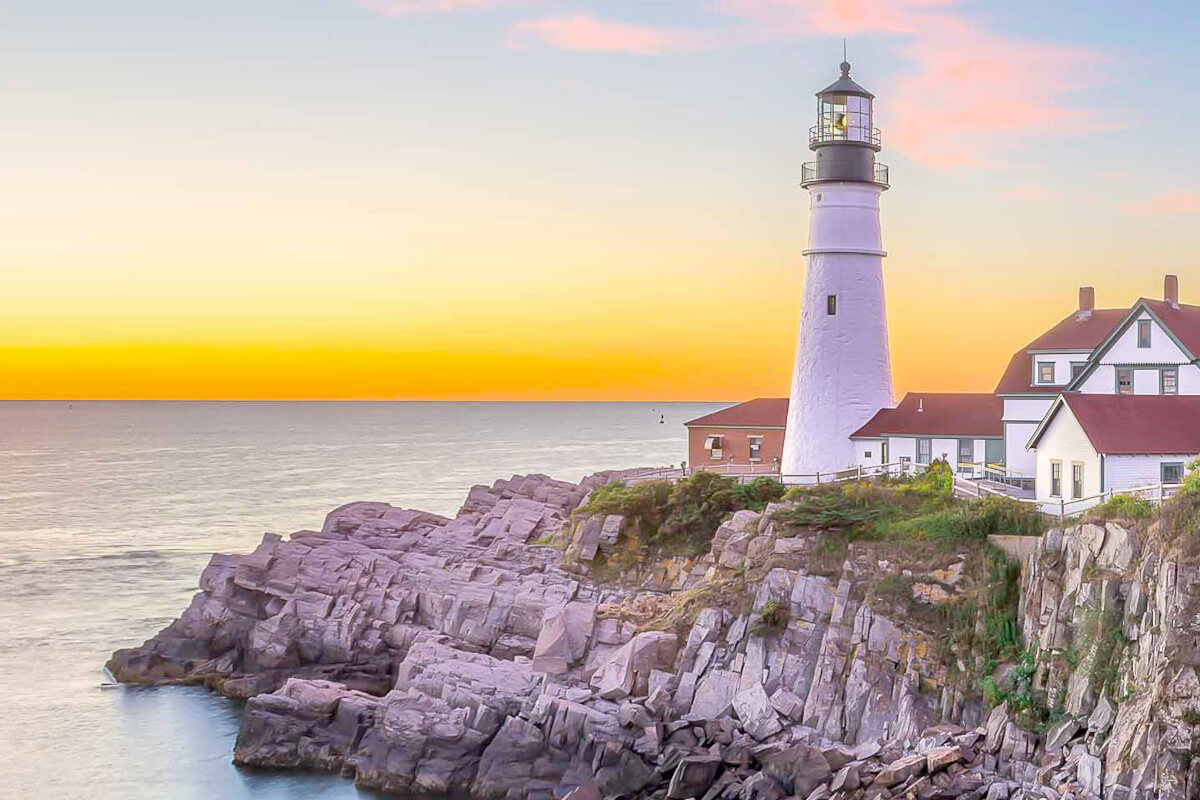
Canadian Maritimes and St. Lawrence Seaway
This amazing 16-day Canadian Maritimes and St. Lawrence Seaway cruise aboard the 210-guest Pearl Mist explores the most magnificent regions of Canada and Maine. Peruse the picturesque downtown of Bar Harbor, before visiting the stunning natural landscapes of Acadia National Park.
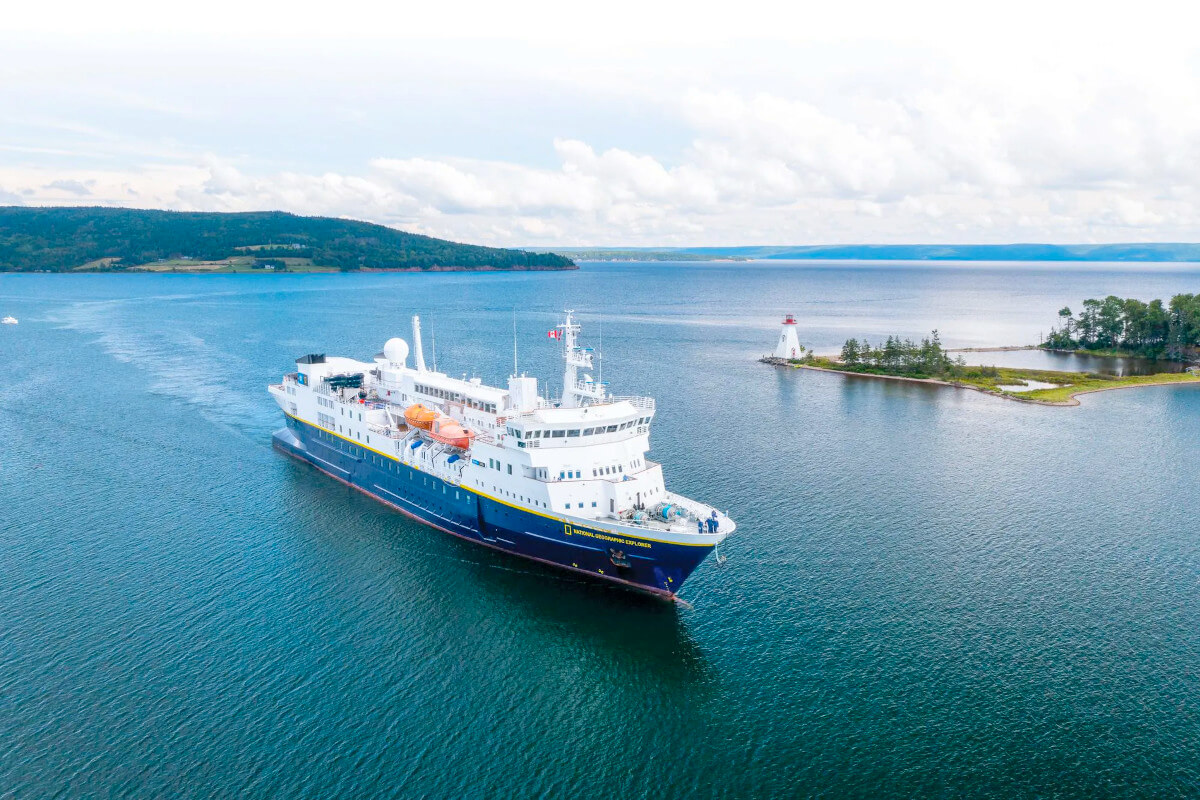
Canadian Maritimes and Newfoundland
On this 10-day Canadian Maritime and Newfoundland cruise roundtrip from St. Johns, Newfoundland aboard the 148-passenger National Geographic Explorer , sail into Eastern Canada’s breathtaking natural beauty.
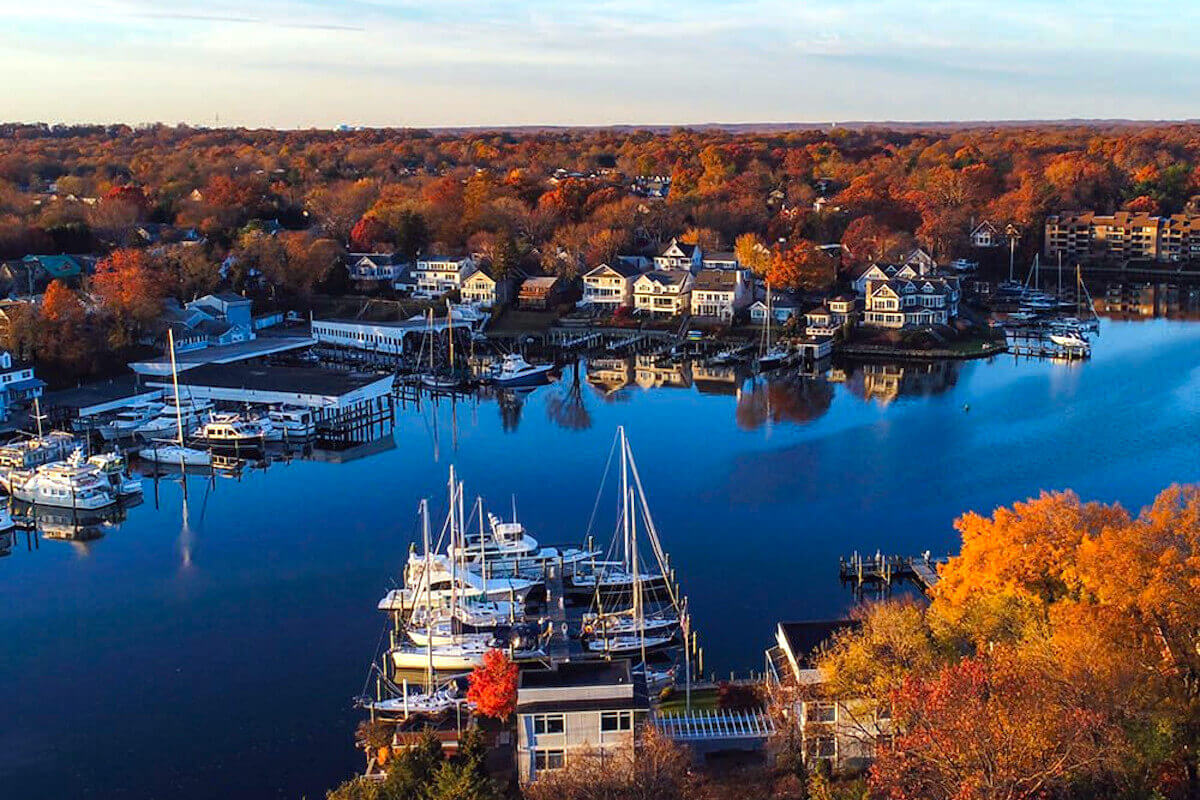
Chesapeake Bay Cruise
This 7-day Chesapeake Bay cruise sailing roundtrip from Baltimore, MD abounds in history and culture. From the vibrant harbor of Baltimore, travel to Yorktown, Williamsburg, and Jamestown, known as the “Historic Triangle.”
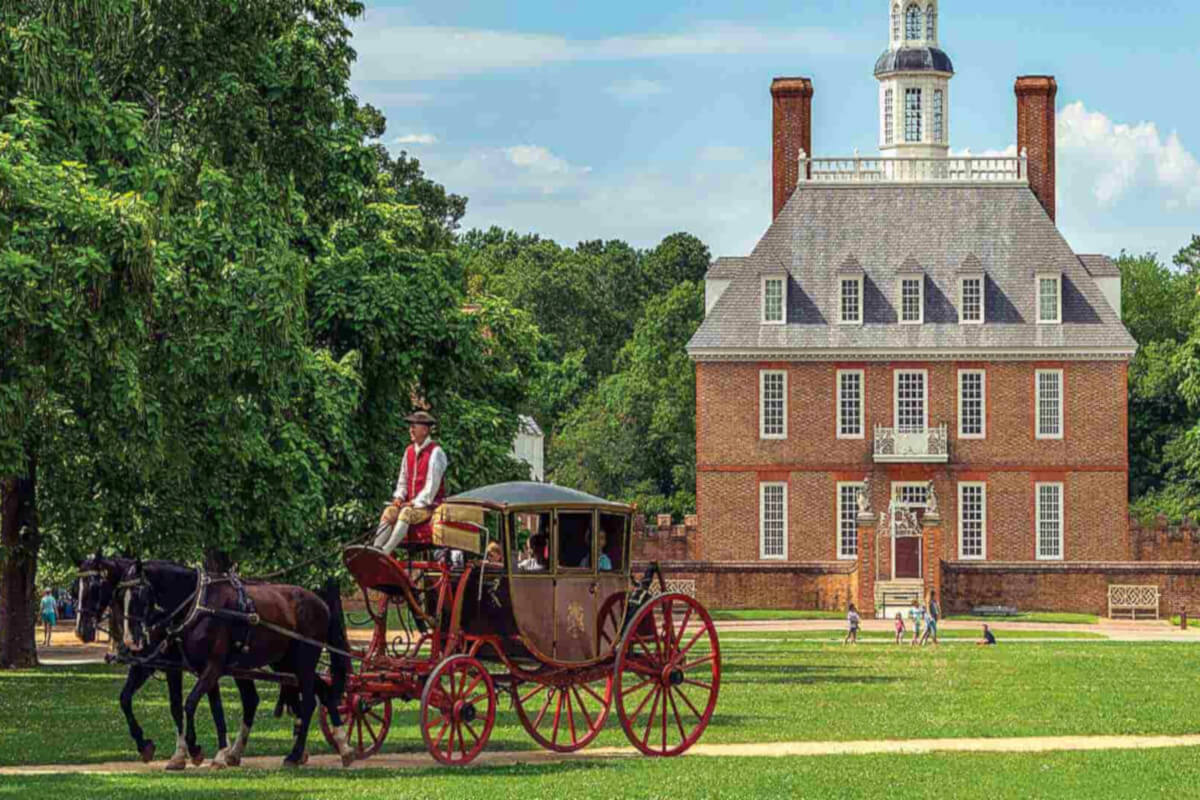
American Revolution Cruise
On this 11-day American Revolution cruise sailing roundtrip from Baltimore, MD aboard the 100-passenger American Constitution , travel back to the dawn of America. Explore the quaint towns and historic cities that have shaped our nation, including Colonial Williamsburg, a living history museum with period-specific tradespeople, shopkeepers, and political figures.
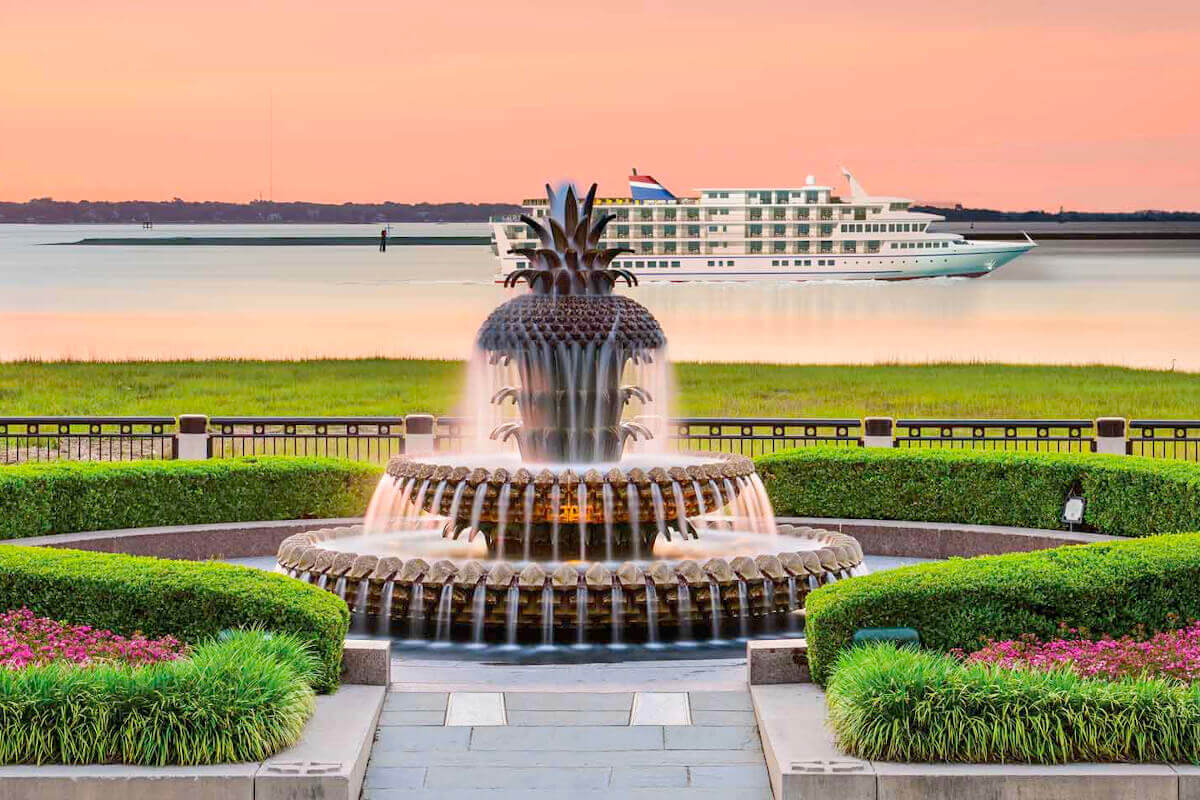
Historic South and Golden Isles Cruise
On this 8-day Historic South and Golden Isles Cruise sailing between Charleston, SC to Amelia Island, FL aboard either the 100-passenger American Star or 100-passenger American Independence , explore the Intracoastal Waterway, home to some of the most beautiful historic cities in America, is a protected network of bays, rivers, and canals.
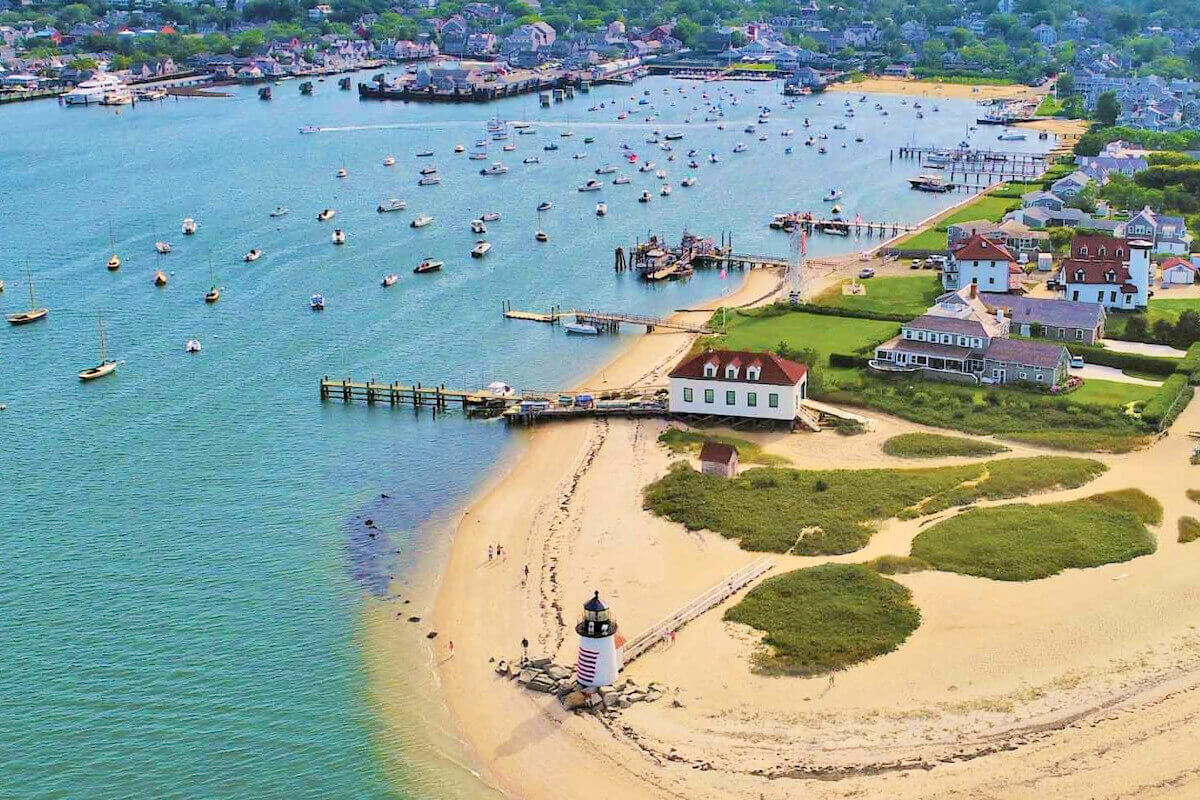
Cape Codder Cruise
On this 8-day Cape Codder Cruise sailing roundtrip from Boston, MA aboard the 170-passenger American Constitution , experience the rich essence of Cape Cod, the perfect a summer retreat.
About Sunstone Tours & Cruises
- About Sunstone Tours & Cruises
- Accessibility
- Privacy Policy


Atlantic Intracoastal Waterway: everything you need to know
Peter Nielsen brings you this guide to cruising the Atlantic Intracoastal Waterway (ICW), or as it is more widely known, ‘The Ditch’

Perhaps you’ve cruised the Caribbean and fancy heading up the east coast of the United States to sample the fine cruising grounds of the Chesapeake Bay or New England. Or perhaps you’re a Canadian sailor itching to escape the brutal northern winter. Either way, you will become acquainted with the Atlantic Intracoastal Waterway (ICW).
The ICW – or ‘The Ditch’, as it is affectionately known by many – stretches 1,088 miles (statute, not nautical) from Mile Marker 1 in Norfolk, Virginia, to its end point in Key West. It is part of a 3,000-mile series of interconnected waterways that can take you all the way from Virginia to Texas.
On the east coast, the Atlantic Intracoastal Waterway is a busy highway in the autumn and spring. The snowbirds flock south in the fall, gathering on the Chesapeake to head south after the Annapolis Boat Show in October and get to Florida as the hurricane season ends in late November. In the spring, there’s a procession of boats heading back to the Chesapeake or downeast to Maine.
American sailors have something of a love-hate relationship with the Atlantic Intracoastal Waterway. On the one hand they deplore the need to motor the best part of 1,000 miles when they could be sailing; on the other, they welcome the many opportunities to duck into shelter from threatening weather. The majority of cruisers taking the offshore option will, for instance, happily nip into the ICW to avoid rounding the notorious Cape Hatteras.
Before I actually went down the ICW for the first time, I did not think of it as a cruising destination in its own right. ‘The Ditch’ sounded far from appealing to this deepwater sailor. Yet over the course of three forays down various parts of the waterway, I began to enjoy it for its own sake. Yes, you will be plugging along under power for many miles, but you will also pass through some beautiful scenery and visit parts of the country that typical tourists would never get to see.
Sailing the Atlantic Intracoastal Waterway
You’ll also get to sail some, notably on the Albemarle and Pamlico sounds, though there are many other places where you can unroll the genoa to get a break from the engine. My favourite parts are the northern section, from Norfolk, Virginia, down to Beaufort, North Carolina, and farther south to Charleston, South Carolina.
On my first excursion I motored slowly down the historic, 22-mile-long Dismal Swamp Canal, dug by slave labour in the late 18th century as a trade route. Its inky black water, infused with tannin from the swamp vegetation, left a brown moustache on our bow. Our spreaders grazed overhanging branches and our 6ft 3in keel bounced over the shallows.
It was a unique experience, followed by a gorgeous cruise along a winding tree-lined river to a welcoming town called Belhaven, where we tied up to the free dock and a friendly local drove us to the supermarket. From there, we set sail at first light in a solid blow, bouncing across a choppy Albemarle Sound, and made 80 miles before dark. Such are the contrasts of the ICW.
There are some pretty towns and cities that warrant a few days’ exploration, for anyone not in delivery mode. Some are famous, some you’ve likely not heard of.

Lighthouse and pier at Manteo, North Carolina. Photo: Matt Claiborne/Alamy
In Norfolk, Virginia, you can marvel at the sight of a good chunk of the US Navy lined up almost gunwale to gunwale along the riverbank; deceptively sleepy Oriental, North Carolina, is home to two good boatyards; while the two Beauforts, ‘Bowfort’ in North Carolina and ‘Bewfort’ in South Carolina, are charming stopovers.
Charleston, also in South Carolina, is an almost mandatory stop, as is Savannah in Georgia. Many cruisers get as far as St Augustine and decide to stop there for a spell. To me, it’s the best town on Florida’s east coast.
As you motor farther south, things get busy. Above the Keys, the Florida coast lacks the charm of the Carolinas or Georgia, and so does the ICW. It’s here that, if there’s a northerly component to the wind, the temptation to hop outside (but stay west of the Gulf Stream) and make some fast miles away from bridges and currents becomes overpowering.
Sure, there are a couple of nice towns to stop at for a while – Vero Beach and Stuart, for example, and it would be a shame to steam past Cape Canaveral without a tour of the space centre – but generally speaking it’s a dull run, and the farther south you go, the more congested the waterway becomes.
Down around Fort Pierce, a good many sailing crews split off and head across to the Bahamas, while others head down as far as Fort Lauderdale. However, I’d recommend going outside well before you get too far south, or at least do not travel on a weekend; as it’s here that the boat traffic gets hellish.

The Intracoastal Waterway is spanned by 160 bridges. Photo: Peter Neilsen
The Atlantic Intracoastal Waterway can become chockablock with all manner of overpowered and under-piloted watercraft, a celebration of horsepower and inebriation, all zooming around willy-nilly. I stayed in the waterway a little too long last year, and being trapped in tight quarters amid so many powerboats was downright frightening at times.
There’s a bridge with only 56ft clearance just before you get to Miami, so most sailing boats have to go into the Atlantic at Fort Lauderdale and back into Miami at Government Cut.
For many, Miami marks the end of the Atlantic Intracoastal Waterway; it’s an easy staging point for the Bahamas. The ICW continues down to the Florida Keys and then up and around the Gulf of Mexico, but most east coast cruisers, and most foreign vessels, either break off and head towards the western Caribbean, or go to the Bahamas and perhaps south to the Eastern Caribbean.
One of the first things the bluewater sailor will notice about the ICW is the sheer number of bridges. There are some 160 between Hampton and Miami. Most of them are fixed bridges, all built to a vertical clearance of 65ft (20m) above the high-water mark. Supposedly built to that height, anyway.
Mind the gap
During my foray down part of the Florida ICW on a catamaran with a 63ft (19.2m) air draught, we lost the masthead wind transducer on one bridge and nervously watched the VHF antenna scraping the underneath of several more. This is nerve-wracking if you have some current with you and are effectively committed, watching the height boards at the centre span and hoping they aren’t lying.

Entrance to the ICW at Fort Pierce, Florida. Photo: Stephen Wood/Alamy
Then there are the opening bridges, which relieve you of height concerns but offer some challenges of their own. Some are bascule bridges, others have a span swinging sideways to open the path for water traffic, others have lifting spans. The latter are usually found in populated areas, or where topography precludes a fixed bridge.
Some will open on demand, the etiquette for which involves a call on Ch13 or Ch9 and a usually pleasant interaction with the bridgekeeper. Others open to a timetable, usually on the half hour. This leads to plenty of strategising, as you either hurry to get to the next bridge in time to avoid milling around with a bunch of other boats waiting for the next opening, or slow down so you don’t get there too soon. What’s more, many of the metropolitan bridges don’t open at all during morning and evening rush hours. Diligent study of bridge locations and timetables will ease your passage along the ICW.
The further south you get, the more bridges you will encounter, peaking in heavily populated southern Florida. The only three locks you’ll encounter are all in Virginia, and they’re easy enough to negotiate.
Overnighting
Depending on your draught, there are plenty of places to anchor for the night along the ICW, and no shortage of town docks and marinas, though these often fill up quickly from mid-October to December and April through May.

ICW at Fort Lauderdale. Photo: Patrick Lynch/Alamy
I’ve stayed for free, or nearly so, at docks in small but welcoming towns along the waterway, and enjoyed hot showers and restaurant meals in marinas, but most of all I have enjoyed the many lovely anchorages I’ve discovered.
Often, an overnight stop is as easy as pulling a few boat lengths off the channel, depth permitting, and dropping the hook. The various guides to the ICW will point out the best spots. One October we pulled over to a tiny dock on the Dismal Swamp Canal and shivered in our blankets as the temperature dropped close to freezing on the stillest of nights; next day we were in shorts and T-shirts again.
Another time, just north of St Augustine in Florida, we sat on deck with gin and tonics and watched an hours-long lightning show play out in the clouds, happy not to be underneath it. And on one occasion, anchored in a cut leading out into the Atlantic, I paced the deck nervously as the wind pushed the boat one way and the current another, the anchor chain stretching bar-taut astern. In some places you may want to double up on your anchors, or drop a kellett from the bow to make sure your anchor chain doesn’t foul your keel or running gear.
I also recall sitting out a late November north-easterly in Beaufort, North Carolina, where the boat heeled in her berth to 50-knot gusts while we sat in a bar eating boiled oysters, feeling relieved to be in a marina.

Beaufort, South Carolina. Among the best parts of the ICW are the 200 miles north of here. Photo: John Wollwerth/Alamy
Luckily, such blows are well forecast and there’s really no excuse for being caught out in one. They also remind you why you’re in the ICW instead of out at sea at that time of year. During that same passage south, we left Morehead City, North Carolina, bound for Charleston, only to catch a forecast that made us duck back into the ICW at Wrightsville Beach. That night, snug at anchor, we listened to the wind howling in the rigging while 20 miles offshore, about where we’d have been, a new Beneteau 50 was dismasted and its crew rescued by helicopter.
Navigating the Atlantic Intracoastal Waterway
Make no mistake, the ICW is shallow. The US Army Corps of Engineers tries to maintain the depth to 9ft (2.7m), but given the nature of the waterway, with its often strong currents, things aren’t always the way they’re supposed to be. I’ve run aground several times, but only once with any damage. On the other hand, some friends went the length of the waterway without a functioning depth sounder and never once touched bottom.
I used Navionics charts on my iPad on each of my ICW trips and never had any issues. Although some commercial traffic does run at night, it would be foolhardy for us sailors to do the same. It would be all too easy to misjudge a turn and end up with your keel stuck in the mud.

Draw bridge over the Intracoastal Waterway at Great Bridge, Chesapeake, Virginia. Photo: Cindy Hopkins/Alamy
The navigation marks are all well kept, and follow American red-right-returning protocol, return being southbound on the east coast.
Channel markers can become confusing where channels from seaward intersect with the ICW, so there’s a simple system of reflective yellow squares and triangles superimposed on the nav aids; leave the triangles to starboard, the squares to port. If the nav aids don’t have the yellow marks, you’ve left the ICW.
Dealing with traffic
At least until you get to the chaos of south Florida, boat traffic on the waterway is easy enough to deal with. Faster boats wanting to pass should hail you via VHF. If you’re feeling generous you can slow down to let them pass faster, which is sensible, for you don’t know what’s coming your way around the next bend.
We sailors are slower than most other traffic, so we get passed often. Most powerboaters will slow down as they pass so as not to ‘wake’ you. There are some exceptions, notably big sport fishing boats with professional crews who delight in steaming past at full speed.
It can get crowded at bridges, so my advice is to hang back and let the nimbler powerboats go first.
Planning an Atlantic Intracoastal Waterway passage
There is lots of literature about the ICW, most of it hard pilotage advice, which is as it should be. If you want some entertaining reading, try The Boy, Me and the Cat , by Henry Plummer, a fun tale of a cruise up the ICW in a small catboat in 1912.
Otherwise, here are some useful books and websites:
The Intracoastal Waterway, Norfolk to Miami – The Complete Cockpit Cruising Guide , by Bill Moeller/John Kettlewell. Waterway Guide Atlantic ICW , by Waterway Guide Media (updated annually). 2021 ICW Cruising Guide , by Bob423.
Many cruisers swear by Bob423’s frequently updated online guides and paperback books. Bob has travelled the ICW for many years and few know it better. His blog is at bobicw.blogspot.com
You’ll spend a lot of time obsessing about bridges and their opening times; the Waterway Guide website and Bob423’s blog are good sources of up-to-date info.
On my ICW excursions, I have exclusively used Navionics charts on iPad and phone, with C-Map charts on the plotter as a backup. I have been happy with the accuracy and functionality of the Navionics charts. Many cruisers also swear by Aquamaps.
Note: We may earn a commission when you buy through links on our site, at no extra cost to you. This doesn’t affect our editorial independence.
If you enjoyed this…..
Yachting World is the world’s leading magazine for bluewater cruisers and offshore sailors. Every month we have inspirational adventures and practical features to help you realise your sailing dreams. Build your knowledge with a subscription delivered to your door. See our latest offers and save at least 30% off the cover price.
Related Posts

Leave a Reply Cancel reply
Your email address will not be published. Required fields are marked *
Navigate To Country
Navigate to cruising resource, navigate noonsite.
- Latest News
- Latest Reports
- Latest Security Reports
- Useful Resources
- Noonsite Library
- Become a Member
- Membership FAQ's
- Newsletter Signup
- Newsletter Archives
The Intracoastal Waterway and the Great Loop
While Noonsite predominantly covers only coastal ports, we’ve come to realise via feedback from international cruisers that there is little information out there regarding the ICW & Great Loop specifically for international visitors to the USA. Therefore we have put this report together as an introductory guide and we welcome any feedback from cruisers who have done any or all of these routes, especially as an international cruiser. Please use the comment function via the speech bubble icon to submit updates.
Published 7 years ago, updated 8 months ago
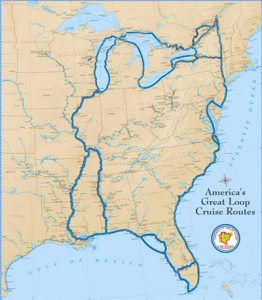
Introduction
The Intracoastal Waterway surrounds the entire eastern and southern seaboards of the United States. Combined with major inland rivers and canals, it is possible to take a circular route from Florida to the Great Lakes and back to Florida, circumnavigating the eastern half of the United States entirely by water: this is known as the Great Loop.
In reference to many of the rules and regulations that are discussed here, we at Noonsite make sure to list all of the possible rules and regulations that may be encountered whilst cruising; however, enforcement may vary. (For more about this, see the comment from a cruiser below.)
Intracoastal Waterway (ICW)
The Intracoastal Waterway (commonly referred to as the ICW) is an intricate, well-established, well-charted system of waterways that allow a cruiser to drive a boat all the way from Brownsville, Texas (at the Mexico-US border) to Boston, Massachusetts, almost without ever spending much time in open water. There are only a few places that the ICW does not connect and these areas require an offshore jaunt.
The ICW is entirely separate from the sea, but it runs along the coast sometimes only a few hundred meters inland. Most of the ICW is created by linking the bays and inshore areas behind barrier islands with rivers and canals. Where there was no barrier island or natural river, the canals were cut by brute force, dynamite, and earthmoving equipment. Where the water was too shallow, an army of dredges pumped it all out to a standard depth.
The official directive is that the ICW is maintained to dredged depths of nine to twelve feet, though in reality there are some areas that silt and shoal too rapidly for the US Army Corps of Engineers to maintain. Also, the ICW is a federal project and requires government funding that is sadly lacking at this time.
There are two primary sections of the Intracoastal Waterway. The eastern section is known as the Atlantic Intracoastal Waterway (AICW) and runs from Boston to South Florida. The southern and Gulf Coast section is known as the Gulf Intracoastal Waterway (GICW) and it runs from Brownsville, Texas, (at the Mexican border) to Carrabelle, Florida. There is an inland section from Stuart, Florida, to Fort Myers, Florida, known as the Okeechobee Waterway: it is a direct cut across the middle of the state. This route is not as common for sailing vessels with tall masts or deep draughts, but cruising yachts regularly skip the Florida Keys and open water by bisecting the state.
The Great Loop
The Great Loop is a well-established cruising route that circumnavigates the entire eastern seaboard of the United States. The traditional route is approximately 4800 miles long; but, depending on the route and how many detours are taken, the entire trip can extend to more than 8000 miles. There is no official starting point. It is most common to cruise the great loop in a counter-clockwise direction to take advantage of the natural flow of the Gulf Stream and (generally) southbound flow of the inland rivers.
There is a traditional “official” route. The Atlantic Intracoastal Waterway (occasionally AICW) is used on the Atlantic coast of the United States. Cruisers occasionally will take an outside, open-water route to “jump” a section that is particularly difficult navigationally, or if speed is of the essence. Some of the most famous cruising grounds in the Western Hemisphere are along this route, particularly the Chesapeake Bay.
The Great Loop passes directly through New York City and continues up the Hudson River into the inland waterways of Upstate New York. The route to the Great Lakes can take multiple courses, but thorough research must be conducted to ensure a yacht’s draught and mast clearance can make the journey. The Great Loop continues through a portion of Canada before re-entering the United States and sailing to Chicago. The Great Lakes are inland seas: extreme weather can be just as dangerous on Lake Michigan as the North Sea.
The next leg of the journey is the major river systems of the Eastern United States. In downtown Chicago, yachts enter the Calumet River, which then joins to the Mississippi River a few miles inland. From there cruisers have access to many major cities such as Nashville, Memphis, Cincinnati, Huntsville, St. Louis, and everywhere in between. The Mississippi River route is becoming less popular in recent years. Most cruisers favor the Tennessee-Tombigbee Waterway (“Tenn-Tom”). While the Mississippi River holds a more legendary place in the mind of most adventuresome cruisers, there are far fewer facilities and, south of Memphis, there are many hundreds of miles between marinas, fuel stations, or services for cruising yachts.
The Gulf Coast section of the Great Loop exits through Mobile Bay (after the Tenn-Tom) and turns eastward again to return to Florida.
Skippers and crew who undertake the Great Loop are called “Loopers.” The accepted way to become an “official” Looper is to circumnavigate and return back to their personal starting point.
There are many known “Loopers” who live on their boats full-time and circumnavigate every year, spending Summers in the north and Winters in the south. It is not uncommon to meet someone who has circumnavigated more than twice.
The Great Loop has an official cruising association ( https://www.greatloop.org/ ) and a club burgee to fly to indicate “Looper” status. The organization holds regular meet-ups all over the country.
The amount of time it takes to circumnavigate the Great Loop varies widely, but most cruisers try to start heading north from Florida in the Spring, spend the heat of the summer in the North, then come south through the river systems in the early Autumn when the leaves are just changing color. Done at a steady pace, it can be done in six months, though most cruisers take their time. An average of nine months circumnavigation time is typical.
While many inlets are navigable by larger yachts, not all are. Local knowledge is strongly advised to safely transit an inlet. While the tidal range may not be significant compared to elsewhere in the world, the currents can be fierce. Three to four knots – and even as high as six knots! – is common in narrow channels and under bridges.
Thoroughly research any and all inlets prior to entry or exit. It would be prudent to avoid entering or exiting an inlet if no one on board has transited the inlet before. Night approaches to tidal inlets can be potentially hazardous, also. First-time visitors to the United States are advised to enter at a major port inlet where deep-water is easily found and navigation is not complicated.
It is worth mentioning that bridges pass over some inlets. Whilst some have adequate clearance or are lifting (bascule) bridges, some are short and do not open. Do not assume that all inlets offer equal access. Some lifting bridges over inlets will open on a schedule, which means approaching vessels will be required to wait in the tidal flow for the bridge to open.
The ICW and other inshore waters are normally well-charted in the United States. Electronic charts are regularly updated. Crowd-sourced charts such as Navionics or CMAP are typically best. Most electronic charts include a “suggested line” which is not always the best course to follow in the real world, it is simply a guide to show the ICW route: channel markers in the real world should always be consulted for navigation.
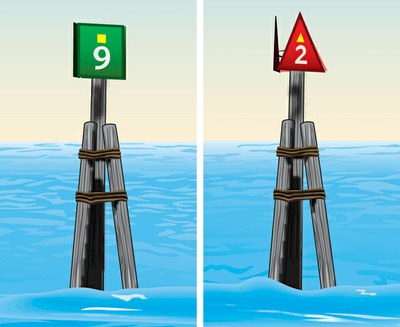
The ICW markers are usually large poles driven into the seabed. They are solid, fixed structures, often made of steel or wood like a telephone pole. They are capable of doing serious damage to yachts if struck. ICW markers are always GREEN squares and RED triangles. They will have sequential numbering, which does not indicate mileage or any other system of measurement, but they are used frequently by marinas to give directions or distance. Sometimes the number will seem to arbitrarily reset at the beginning of a new river or canal. ICW markers are able to be discerned as separate from other channel markers due to a small yellow symbol, often above the marker number. GREEN channel markers will have a small yellow square; RED channel markers will have a small yellow triangle. (Image above courtesy of Boat Delaware )
When in major inlets, shipping channels, or deep water, the fixed poles are replaced by large floating buoys. The shape of the buoy will remain the same (GREEN has a square shape and profile; RED has a conical/triangular shape and profile) but there will always be a small yellow symbol to indicate the ICW channel.
The markers follow the US Aids to Navigation System, which is occasionally different from Europe. See this website for more clarification: https://www.uscgboating.org/
ALWAYS follow markers and buoys. The ICW can be extremely shallow immediately outside the channel. Occasionally, the markers will be shifted (after storms) or there will be some need for intermediate buoys between solid markers. This is done frequently when shoaling occurs, or to indicate river bends. The intermediate markers are normally small green or red floating buoys marked with a number and letter to indicate the intermediate buoy (9A, 9B, etc).
The ICW is constantly changing. Every hurricane or torrential rain causes shifts in the sediment and shoaling at deltas. Keep a close watch on your depth sounder.
If you run aground and or otherwise are in need of a tow, there are a number of commercial organizations that exist specifically for this reason. They charge for their services per hour, but it is possible to purchase a yearly membership, which covers towing. A single towing may cost more than a year of membership.
One such organization is SeaTow. It is an official organization of captains that are available 24/7 for towing, ungrounding, disentanglements, jump starts, and emergency fuel deliveries. They are also available for some catastrophe response. SeaTow responds on VHF Channel 16.
Each SeaTow captain is local to their coverage area; therefore, many cruisers will call them on the VHF to ask about local knowledge prior to approaching inlets or before passing through a tricky navigation area. Local knowledge questions are, of course, free of charge.
Anchoring is permissible in the United States almost anywhere. Anchoring along the ICW is common and sometimes necessary where marinas are not available.
Many foreign skippers visiting the United States are surprised at how easy it is to anchor. The bottom of the ICW is typically receptive to the heavy spade anchors that are necessary for Caribbean and Mediterranean anchorages. Some lighter-weight anchors are easily used in heavy silt and hold easily. Remember to anchor with the tide reversal and low-water depth in mind.
Similar to elsewhere in the world, it is good manners to avoid anchoring too close to any yacht. Some small anchorages are not conducive for even two yachts to swing. Please be courteous when anchoring.
Along the ICW, there are some anchoring fields where there will be some yachts on a permanent mooring. Keep in mind that some of these yachts may not be occupied. They may be on a “hurricane mooring.”
Always anchor with a 360º visible white anchor light. It is also good practice to illuminate the deck all night if anchored in an area of low visibility (i.e., in the bend of a river or in a narrow channel).
In some states – particularly Florida – there are restrictions on anchoring too close to permanent structures. (Please visit the Florida section for more information on the local ordinances which restrict anchoring.) In Georgia, proposals are in place to restrict anchoring (June 2019). See this news item for more details.
The laws governing the ICW and the rest of the Inland Waterways of the United States are mostly the responsibility of the individual states. They tend to be fairly standard, but enforcement varies (see next section). Do thorough research prior to arrival in the area you will be cruising.
One such rule that surprises some visitors to the United States is that marine heads and overboard discharge are tightly regulated. Some laws require that you have a “lock” on your holding tank seacock. The lock can be as simple as a cable tie, but it is to prove that you are not regularly pumping out overboard and that you are attempting to comply with the law in advance.
See USA Restrictions for more details.
It is vitally important to keep your paperwork in order and get all the required permits before cruising.
Government & Law Enforcement Jurisdictions
The US Army Corps of Engineers is tasked with maintaining the ICW. The US Coast Guard patrols all coastal waters, including the Intracoastal Waterway. Also, first-time foreign visitors to the USA may not be aware that each state, county, and city have separate law enforcement entities and each may patrol the waterways depending on the individual jurisdiction of the agency: near cities, the local police may have a regular patrol; in the remote countryside, county or state police may have a waterborne presence. It is a general rule, though, that the skipper of a vessel in United States territorial waters is responsible for abiding by ANY and ALL rules, ALL posted signage, and verbal instructions from officials.
It is not uncommon for patrolling watercraft on the ICW to approach private vessels and “pull them over.” It may alarm first-time visitors to the USA because the law enforcement officers will board quickly and somewhat aggressively. This is common practice in the United States – done because some cruisers have been known to run downstairs and try to fix the problem or get rid of the evidence. But, there is no implication that any laws were broken. Most often getting pulled over in a yacht is a check for licensing, registration, insurance, head seacock closure, and (in the case of foreign nationals) immigration and customs compliance. (NOTE: It is worth mentioning that some foreign yachts do not realize that, in the United States territorial waters, the head seacock must be in the “CLOSED” position with some evidence that it is “locked.” A simple cable tie will normally do to prove that you do not frequently use the seacock. Law enforcement is known to check for head seacock closure compliance.)
Additionally, the US Coast Guard is militarized in the United States (similar to UK Border Force) and serves as a coastal protection force that also enforces immigration and customs in territorial waters. In the inshore waters or along the ICW, there are alternate agencies that are able to help in the event of an emergency. Some cities and counties have a Rescue Squad, which can assist in inshore breakdowns or health emergencies. Firefighters, forestry services, and the Department of Natural Resources all have patrolling vessels.
There are also a number of commercial enterprises that can assist in the event of emergencies, but these are for-profit and will charge for assistance. Most often, these are used for towing broken-down vessels, helping grounded yachts, or salvage. These companies are not necessarily intended to assist with emergencies but will assist (as any nearby yacht is obligated to assist in an emergency at sea).
The US Coast Guard will likely answer any MAYDAY or PAN-PAN calls near the coast and coordinate emergency response with the appropriate local agency and other nearby vessels.
Radio Etiquette and Contacting Vessels
Radio etiquette for VHF calling in the United States is exactly the same as elsewhere in the world; however, some of the channels are different. Most modern radio sets have the option to switch from “International” frequencies to “USA” frequencies. Numbers like Channel 09 and Channel 16 are the same, but more “Alpha” channels are added. It is important to switch over to these frequencies because they are commonly used in areas of increased traffic.
Most importantly, the US Coast Guard often uses VHF Channel 22A (pronounced: “twenty-two-alpha” or “two-two-alpha”) as a working channel. Some marinas on the ICW will use VHF Channel 78A or other “alpha” channels as they are designated “non-commercial port operations.”
It is paramount that you abide by all international standards for VHF radio etiquette. The US Coast Guard monitors all transmission in the coastal waters and violations are monitored and recorded. Like elsewhere in the world, “broadcasting” (calling on the VHF without an intended recipient) is illegal. Also, the use of foul language, playing music, or talking on VHF Channel 16 (except for initial contact) is also against the law.
Do not, under any circumstances, call the Coast Guard for a radio check or broadcast for a radio check without an intended recipient of the call. In the United States, this is not allowed. Never call for a radio check on VHF Channel 16. If you need a radio check, call the local SeaTow captain or a local marina on their working channel.
Atlantic Intracoastal Waterway Bridge Procedure
Nearly all fixed bridges are standardized to at least 65ft at high water – all except one bridge in the main channel of the ICW through Miami . It has only a stated 55ft clearance at the center at high water. Northbound or southbound boats with mast heights higher than about 55 ft. must leave the ICW and transit “outside” for approximately 25 miles between Government Cut and Ft. Lauderdale inlets.
Shorter bridges are all able to open, but some bridges do not operate 24 hours a day. Openings and closings are controlled at a manned control tower on each bridge. The bridge operators respond on VHF Channel 09. (Never use VHF Channel 16 to contact bridge controllers to request a bridge opening.) Standard VHF radio etiquette is expected and violators are reported to the Coast Guard.
Even if a particular bridge opening abides by a schedule, it is standard procedure for every yacht awaiting a bridge opening to contact the specific bridge BY NAME and request the opening, even if many other yachts have already done so. Make the call using proper VHF radio etiquette using the official name of the bridge and announcing the name of your yacht, as well. Bridge information is listed in all charts: the name of the bridge, air draught clearance, and opening schedule. If you are requested to spell the name of the yacht, do so with the phonetic alphabet. This is done for safety purposes to ensure all yachts in need of the opening pass through the open bridge before closing, and a record is kept of all yachts transiting the bridges.
Occasionally, wait times at bridges can be long and many vessels will be waiting on both sides.
There is no “official” etiquette for who has the right-of-way when transiting bridges, but it is customary that the boats coming downstream pass through the bridge first. Keep in mind that the tide shifts the current, and “downstream” occasionally switches. Towboats, mega-yachts, river cruise boats, and any limited-maneuverability vessels will typically notify all nearby craft of their intentions long before the bridge opens. This notification typically occurs on VHF Channel 09.
After passing through the opened bridge, it is the standard courtesy to announce to the bridge on VHF Channel 09 that your yacht is clear of the bridge. It is at this point that you sign off with an “out” call.
The ICW bridges are only obligated to open for yachts with fixed structures (i.e., masts, fixed radar arches). Antennae, satellite domes, and collapsable radar arches must be in the “down” position. Vessels that refuse to lower collapsable structures may be reported by the bridge operator to the US Coast Guard and subject to a fine.
Provisioning and Facilities
Some areas of the ICW are extremely remote and cut through long sections of the uninhabited landscape. It is also common to cruise more than 100 miles without a fuel dock. Serious cruising of the ICW or any of the United States requires careful strategy and provisioning, not to mention a yacht that is largely self-reliant. Many ICW cruising yachts make use of generators. Wind speeds are rarely strong enough to rely on a wind generator, but solar panels can be used effectively in the southern states.
Facilities along the United States coast can range from megayacht harbors with resort-style amenities to tiny fishing piers advertised as “marinas.” Most cruisers report that some of the most enjoyable experiences they ever had were a result of staying on a dock they thought their yacht would break. Water quality should be potable nearly everywhere – even in more rural areas – but electricity may not be available at smaller marinas except through a standard (household) plug.
It is possible to find “courtesy docks” in some cities. Typically, these are city quays, municipal piers, or docks attached to parks or convention centers that are meant for relatively short stays but are free to use. These courtesy docks are almost always in excellent locations, often directly downtown, and are designed to encourage boaters to visit downtown. There is usually a posted limit to how long you may stay at a courtesy dock: often a matter of 12-hours, 24-hours, or one overnight. Long stays are discouraged and may result in a fine for overstaying.
Some courtesy docks have an automated payment system, similar to a parking meter, that may charge a few dollars per hour stayed.
The downside of courtesy docks is that, while they are free and in great locations, they are usually in areas of downtown with high foot traffic and little – or non-existent – physical security (besides a CCTV camera and an occasional police drive-by). The public will be able to walk directly up to the side of your yacht. Some cruisers enjoy this, as it is common to be frequently engaged in conversation with passers-by; but some cruisers find the crowds too rowdy – after all, these docks are often in the center of town where restaurants, bars, and shops are open late into the night.
Another downside of courtesy docks is that they usually have minimal auxiliary services such as showers, toilets, or water. Power is sometimes available, but prior arrangements may have to be made to have the bollard unlocked or turned on.
And, as usual, always lock your yacht and secure everything on deck and down below, even if you are staying overnight in the boat.
Can my yacht do the ICW? Or even The Great Loop?
There are height and draught restrictions on the route.
Most bridges lift or otherwise open. Fixed bridges are typically regulated at 55ft or 65ft above high water. Bridge clearance is indicated on the charts. Also, bridge clearance is indicated on a water-level board at the base of the bridge, which is referred to as the “official” clearance. However, the bridges near Chicago are quite short – one bridge is 19ft 8in and does not open. In Chicago, it is possible to unstep the mast, pack up all the rigging, and ship it overland by truck to Mobile, Alabama (the end of the river journey for most vessels).
Most sailboats cruise the inland river systems as a powerboat. It is also possible to make arrangements to have a “stump” mast fitted so that VHF aerials, radomes, and anchor lights can still be mounted properly and only have 10-12ft clearance.
The official maintained the depth of the ICW and inland navigable waterways is supposed to be nine to twelve feet. Due to the enormous length of the coastline and inland rivers, this is not always possible. Coastal areas change more frequently than rivers, but areas near deltas, estuaries, or inlets should be traversed carefully. There are areas (particularly in Georgia and the Carolinas) that see 6ft draught at best. Hell Gate, south of Savannah, or the Dismal Swamp in North Carolina, are two of these areas. The locks and unusual canal regulation systems of New York and Canada may pose some limitations as well. Research these areas keeping in mind your yacht’s specifications prior to arrival.
Cruising the ICW and the Great Loop can be done with almost any normal vessel. Most cruisers from Europe, however, will be in a 40-45ft sailboat with a 60ft mast. This kind of sailboat is perfectly capable of making the journey with a few restrictions.
Using a Dinghy on the ICW
Whilst international cruisers visiting the USA will likely have their own dinghy or tender, it is not always a requirement for cruising in this area of the world. Due to the prevalence of dockage – free docks or otherwise – many cruisers report that they go multiple weeks on the ICW without putting the dinghy in the water at all.
Cruiser’s experiences vary, of course. Some prefer to spend most nights at Anchorage; some prefer to spend most nights in marinas – there is no “perfect” way to cruise the ICW. Those who anchor out will often still find that they only use their dinghies for recreation, for exploring, or for purposefully not going into marinas for budget reasons rather than by necessity.
One of the common uses for dinghies on the ICW is as an assist vessel in case of running aground (i.e., pulling the larger vessel or hauling an anchor). Another common practice if cruising with a dog is to anchor and use the tender to go ashore for walks.
Keep in mind that some of the ICW are inaccessible, even by dinghy, because it is either private property, or it may be marshland, rocky, or too steep.
Useful Links:
Waterways Guide: https://www.waterwayguide.com/
Captain John’s Great Loop Cruising: http://www.captainjohn.org/
Great Loop Cruising Association: https://www.greatloop.org/
Intracoastal Waterway Guide & Schedules etc.: http://www.offshoreblue.com/cruising/index.php
Free docks located on the AICW: https://www.icwfreedocks.com/
The Atlantic Intracoastal Waterway Association: https://atlanticintracoastal.org/ Notices to Mariners and news about shallows, obstructions and things to do with the Army Corps of Engineers.
Salty Southeast Cruisers’ Net app ( for Android and for iPhones ) Cruising and navigation updates from a highly-regarded source. For both Android and iPhone on tablets or phones.
Tablet Navigation on the ICW (Tom Hale for PropTalk): https://www.proptalk.com/tablet-navigation-intracoastal-waterway-icw
Associated Reports & News
USA, Erie Canal: Transiting an Historic Waterway (SV Begonia – 2022)
USA, Florida, Ft. Lauderdale: Plans to dredge the Intracoastal Waterway (ICW) – (2014)
Crossing Canada and voyaging down the St. Lawrence to Nova Scotia – (2011)
From the Chesapeake to Lake Ontario, via the Hudson River – (2008)
10 Reasons to Sail the Intra Coastal Waterway (Sailing Britican)
Why Would Anyone Want to Cruise the Great Loop? (Commuter Cruiser, Nov 2017)
Georgia on My Mind: Cruising Coastal Georgia and the Low Country (Cruising World, Oct 2017)
Cruising Through America: Chicago to Mobile (Quantum Sails, March 2017)
Middle Earth on the ICW – Georgia’s Cumberland Island (Cruising World, April 2016)
The Hatteras Bypass (Cruising World, Sept 2015)
Publications:
Atlantic to Great Lakes – Choosing your Great Loop route (The Waterway Guide)
Waterway Guide: Atlantic ICW (Paradise Cay Publications)
The Intracoastal Waterway – Norfolk to Miami
2017 Atlantic ICW Cruising Guide
Read and Post Related Comments
Related to following destinations: Canada , Nova Scotia , Ontario , USA
Related to the following Cruising Resources: Cruising Information
Leave a comment Cancel reply
You must Login or Register to submit comments.
If you plan to travel the ICW you will find it very rewarding, but some areas can be a challenge without local knowledge. There is generally plenty of water in the ICW even at low tide, but the trick is finding it. Charts of the ICW historically showed a center line, or as it was called the Magenta Line, based on the color. Even though you will still see the Magenta Line on some chart areas it does not necessarily mark the deepest water.
Thanks to the efforts of a gentleman who travels the ICW twice a year we now have a source for tracks showing the deepest water in all the Atlantic ICW. Robert Sherer, or better known as Bob423, shares his tracks and makes them available for download to your favorite navigation app or chartplotter. Just visit his website https://bobicw.blogspot.com/p/bob423-long-tracks.html and follow the instructions. You can also follow Bob423 and ask questions on his Facebook page https://www.facebook.com/groups/ICWCruisingGuide
Already listed in Useful Links above are Waterway Guide and Cruisers Net. Both are excellent sources for information and have apps for use on your favorite phone or tablet. If free docks are your thing, then also listed is an online guide to ICW Free Docks at https://www.icwfreedocks.com/ . I publish this guide and make it available at no cost for users. If you have any questions, there is a contact form on the website. You can also message or discuss free docks on my Facebook page https://www.facebook.com/icwfree . I will try to answer your questions or point you in a direction for help.
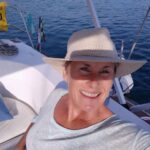
Thanks so much for this great feedback!
Posted on behalf of Bill Willmann, S/V VIVA:
I’m planing to do the Great Loop in 2018 and am in the process of collecting all the information I can. Your article emphasizes the rules, laws, and regulations and makes it sound like a cruiser will be dealing with authorities day and night. An international cruiser (17 years), I did the ICW a few years ago from the Florida Keys to the top of the Chesapeake and back. It took five or six months, and albeit that I’m a courteous and experienced cruiser and fly an American flag, I was only stopped once by the authorities, and that was to ask for proof of dinghy ownership because a similar one had been lost/stolen in the area.
I understand you have to prepare your readers for what could happen, but my fear is that your article will unnecessarily discourage sailors, especially non-Americans, from seeing the real America and learning that we aren’t what they see on the news, etc. Every European I’ve met who has ICW and/or Loop experience has had a very positive, glowing experience, in awe of the navigational aids and friendliness and helpfulness of the people, including the authorities.
Thank you for Noonsite – it’s a great resource for all of us.
Nov 2018 We motored down the ICW from Hampton, Virginia to Charleston South Carolina, we popped out at Beaufort and back in at Georgetown. Then we continued on the ICW until Charleston.
We didn’t have any problems with our draft of 5 ft (1.52M) and our mast height of 55 ft (16.76M) and although there was debris, we managed to avoid it. I also joined a Facebook group called “ICW Cruising Guide by Bob423”. It’s run by Bob Sherer. You can check our website for our route: http://www.untilthebuttermelts.com
Please remember that flood waters from Florence and now from Michael will have lifted tons of debris into the Waterway channels and submerged hazards can do serious damage to your vessel. See Waterway Guide for the latest updates – https://www.waterwayguide.com .
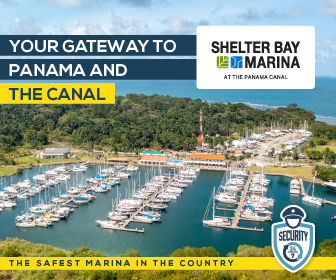

ICW Southbound: Virginia to Florida
The Atlantic Intracoastal Waterway (Atlantic ICW) is a continuous and mostly protected navigable route from Norfolk, Virginia, to Miami, Florida. Originally conceived in 1802 for commercial use, today it is primarily used by recreational vessels. However, light-draft commercial vessels, along with small tugs pulling barges, will make use of the ICW to avoid exposed open-ocean passages. The ICW is made up of natural rivers, bays, and sounds, connected by a series of man-made canals where necessary. The route is maintained by the U.S. Army Corp of Engineers and is measured in statute miles at 1,090 miles long, beginning at mile marker zero (MM “0.0”) in Norfolk, Virginia. When combined with the Chesapeake Bay, a boater can cruise from Baltimore, Maryland, to Miami, covering a total of 1,282 statute miles, or 1,114 nautical miles.
Through the Chesapeake Bay and Atlantic ICW, a boater will experience scenic natural beauty, interesting pieces of our nation’s history and some of the Southeast’s most vibrant cities.
The following legs will enable a boater to make leisurely stops along the way, taking in the best each area has to offer.
Starting Point – Tidewater Yacht Marina, Portsmouth, VA
Tidewater Yacht Marina is located in the heart of Portsmouth’s Olde Town District, within walking distance of 18th-century and 19th-century buildings, a riverfront park, the Norfolk Naval Shipyard, the Lightship Portsmouth Museum, the Children’s Museum of Virginia and the Virginia Sports Hall of Fame. Home to mile marker “0” on the Intracoastal Waterway, Tidewater Yacht Marina is ideal for transients beginning their ICW journey.
Leg 1 – Estimated Mileage: 42 nm – Coinjock Marina, Coinjock, N.C.
Located conveniently on the Intracoastal Waterway at mile marker 50, the Coinjock Marina has been a longtime favorite for transient yachtsmen traveling north and south along the waterway. With all the amenities you would expect from a world-class facility, the staff of Coinjock Marina accommodates guests’ every need. With an easy approach, alongside dockage, an active fuel dock, and a highly acclaimed waterfront restaurant, you’ll soon see why so many boaters return to Coinjock Marina again and again.
Leg 2 – Estimated Mileage: 111 nm – River Dunes Marina, Oriental, N.C.
River Dunes Marina has one of the most protected basins along the Southeast coast. The award-winning, well-protected facility is tailor-made for boaters, with floating docks, wide gangways, and full-length finger piers. Outstanding onshore amenities include a Harbor Club with fine and casual dining, plus a pool and fitness center. Thanks to the marina’s courtesy car, it’s just a 15-minute drive to the village of Oriental, the Sailing Capital of North Carolina and home to all the provisioning and marine services a boater could need.
Leg 3 – Estimated Mileage: 123 nm – Southport Marina, Southport, N.C.
Southport Marina is set directly on the Waterway and is a short stroll to the Southport town center. Recently named “America’s Happiest Seaside Town” by Coastal Living magazine, picturesque Southport is steeped in history and charm, and has attracted not only visitors but film crews for such movies as “Safe Haven,” “A Walk to Remember” and “The Secret Lives of Bees.” Fronting the Cape Fear River and the notorious Frying Pan Shoals, Southport has been a port of haven for sea captains since the 1700s. Wander the docks and sample such local specialties as crab cake sandwiches and steamed shrimp at the restaurants along the water.
Leg 4 – Estimated Mileage: 39 nm – Barefoot Landing Marina, North Myrtle Beach, S.C.
Barefoot Landing Marina is located on the ICW in the heart of Myrtle Beach, South Carolina’s preeminent summer vacation destination. The marina is an easy walk to the sprawling Barefoot Landing entertainment complex, which is packed with family attractions, exciting theater shows, endless restaurants and premier shopping. There is something for everyone to enjoy at Barefoot Landing.
Leg 5 – Estimated Mileage: 103 nm – Charleston City Marina, Charleston S.C.
It’s no surprise that Charleston has been voted a top destination city by numerous leading travel magazines. The city defines classic Southern charm, overlaid with an interesting international feel, and boasts some of the best restaurants in the world. The MegaDock at the Charleston City Marina is a great place to tie up and see some of the finest cruising yachts around.
Leg 6 – Estimated Mileage: 82 nm – Harbour Town Yacht Basin, Hilton Head Island, S.C.
Harbour Town Yacht Basin places you right in the heart of boot-shaped Hilton Head Island. Marked by a distinctive red-and-white lighthouse, Harbour Town Yacht Basin offers a full suite of services along with luxury accomodations. While docked, explore the paradise that is Hilton Head, nestled along the South Carolina coast. From beautiful beaches and world-class golf courses to exceptional restaurants and high-energy water sports, Hilton Head has endless options for whiling away your time.
Leg 7 – Estimated Mileage: 105 nm – Morningstar Marinas at Golden Isles, St. Simons Island, Ga.
St. Simons Island is the hub of the Golden Isles, which is one of Georgia’s scenic barrier-islands, known for beautiful beaches and summer resorts. Located just off the ICW on the Frederica River, Morningstar Marina at Golden Isles will make you feel right at home with its immaculate facilities, top-notch onsite restaurant and full-service maintenance facilities. Spend a day at East Beach, the perfect place to unwind, collect shells and go for a relaxing bike ride. The social hub of St. Simons Island is the Pier Village along Mallery Street, which is dotted with tempting boutiques, cafes and restaurants. The island is also a prime fishing location, for offshore excursions as well as inland water outings.
Leg 8 – Estimated Mileage: 133 nm – Camachee Cove Yacht Harbor, St. Augustine, Fla.
Cobblestone streets, centuries-old buildings, hidden courtyards and alluring cafes help define this historic district of Saint Augustine — the oldest continuously occupied town in the U.S. Jump on the Old Town Trolley Tours to explore the major attractions, including a highly rated wildlife reserve and the Castillo de San Marcos, a 17th-century Spanish stone fortress. Foodies can choose from more than 400 eateries. Also enjoy 43 miles of fine, golden sand beaches for shelling, sunning, surfing and swimming. Dockage is available at Camachee Cove Yacht Harbor on the ICW accommodating vessels up to 130 feet and a fuel dock, on-site restaurant, and a full-service yard with supplies.
Leg 9 – Estimated Mileage: 164 nm – Fort Pierce City Marina, Fort Pierce, Fla.
Fort Pierce is one of the most promising cities on Florida’s Treasure Coast, with a newly rebuilt first-class municipal marina and one of the best marked, most predictable inlets on Florida’s east coast. The pet-friendly Fort Pierce City Marina has recently completed an extensive renovation and offers fuel, showers and laundry and two on-site restaurants, and is just steps away from downtown. Stop in at the 2nd Street Bistro for the lively daily happy hour, an extensive craft beer list and gourmet burgers. Cobb’s Landing, next to the marina, offers fresh seafood dishes and a signature Pineapple Mojito.
Leg 10 – Estimated Mileage: 93 nm – Bahia Mar Resort & Yachting Center, Fort Lauderdale, Fla.
With more than 300 miles of waterways and one of the world’s permiere boat shows, beautiful Fort Lauderdale has matured from a destination for spring-breakers to a major manufacturing, maintenance and recreation center for yachts. Bahia Mar is the ultimate marina destination, with restaurants, shops, a swimming pool, tennis and a pristine beach just across the street. The marina offers 250 slips capable of handling vessels up to 300 feet, plus high-speed fueling, free WiFi, cable television, in-slip sanitary pump-out, a marine store and a dive shop. Also, the Pier Sixty-Six Marina offers dockage for vessels up to 350 feet. Explore the city’s rich dining scene by enjoying a meal at Boatyard on 17th Street, or one of the many spots along Las Olas Boulevard.

Related Articles
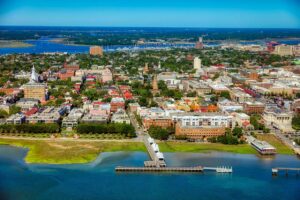
Find a Marina
Fuel search.
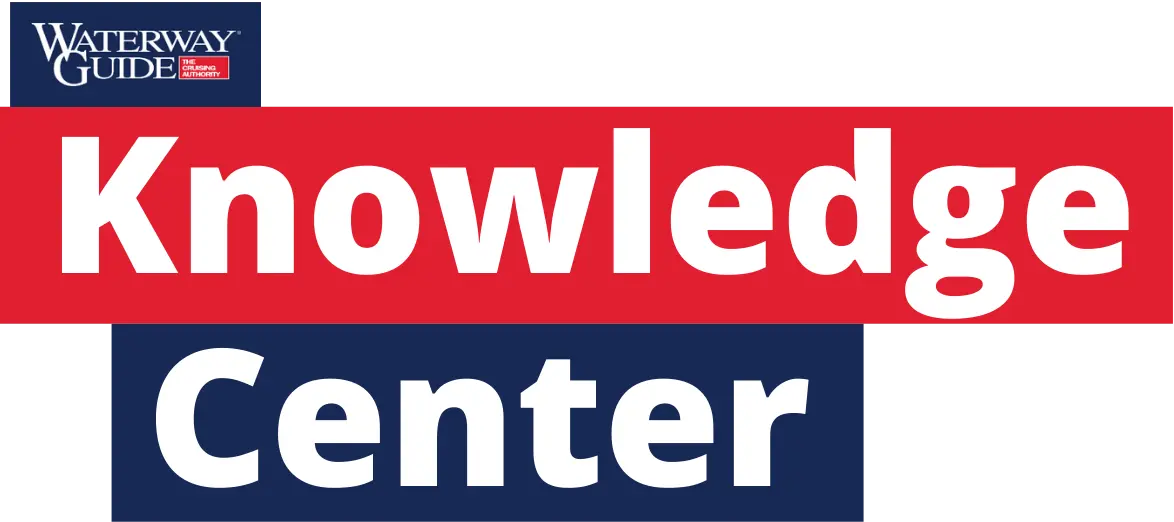
- 4,000 Marinas
- Thousands of anchorages
- Updated Charts
- Mile-by-Mile Navigation
- Highlighted Alerts & Cautions
- Full-Color Aerial Photographs
The Waterway Guide App Makes it easy to leave reviews, use our explorer, and view waterway guide materials all on the go!

- Download The App
- Destinations
- Knowledge Center
Apple Sign-In

Sign up to get Navigation Alerts and News delivered to your inbox!
Invalid Email
Invalid Captcha
Check out our latest newsletter
Newsletter Sign-Up
A life preserver or PFD is formally referred to as a Personal Device.
The captcha question was answered incorrectly.
The email is invalid. Please close the modal window and try again.
Signing-up...
Where life is full of adventures
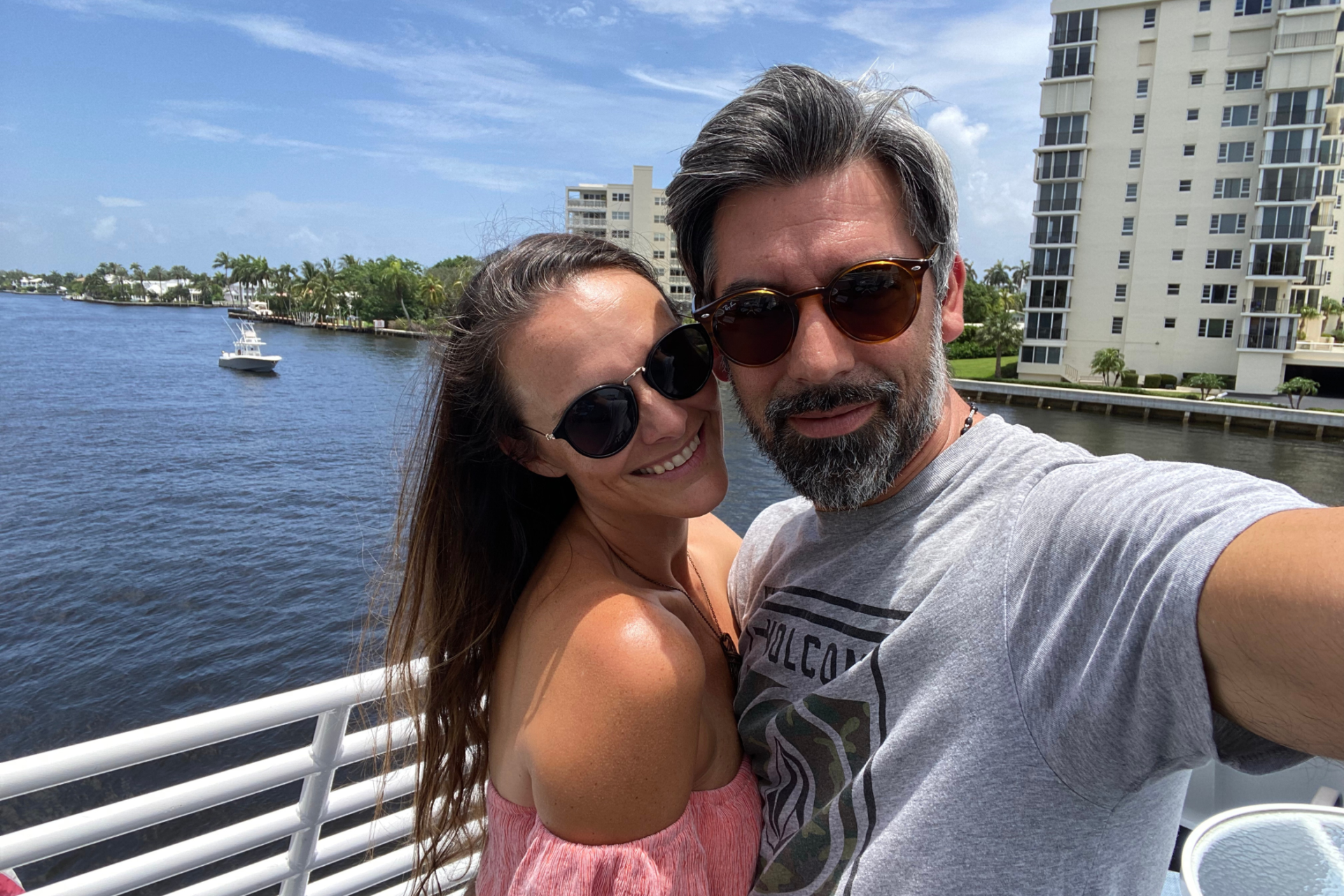
Sightseeing the Intracoastal with Delray Yacht Cruises
On our recent trip to Delray Beach we were looking for unique things to do with kids. We found Delray Yacht Cruises and booked an afternoon sightseeing tour. The 2-hour narrated sightseeing tours cruise through South Florida’s Intracoastal Waterway. These cruise are open to the public and take place all year and allow you to experience the calm waters of the Intracoastal Waterway aboard the Lady Atlantic or Lady Delray.
We booked Saturday afternoon cruise on the Lady Atlantic that took us from Veteran’s Park on East Atlantic Avenue, Delray Beach south to Boca Raton. We had reservations for 1:30pm and arrived 30 minutes early as directed. Check-in is at the little ticket booth near the Yacht and was quick. Before boarding, they took a photo which they printed and found us later in the cruise to offer us to purchase. It was a reasonable price and a great way to remember the trip, so we bought it!
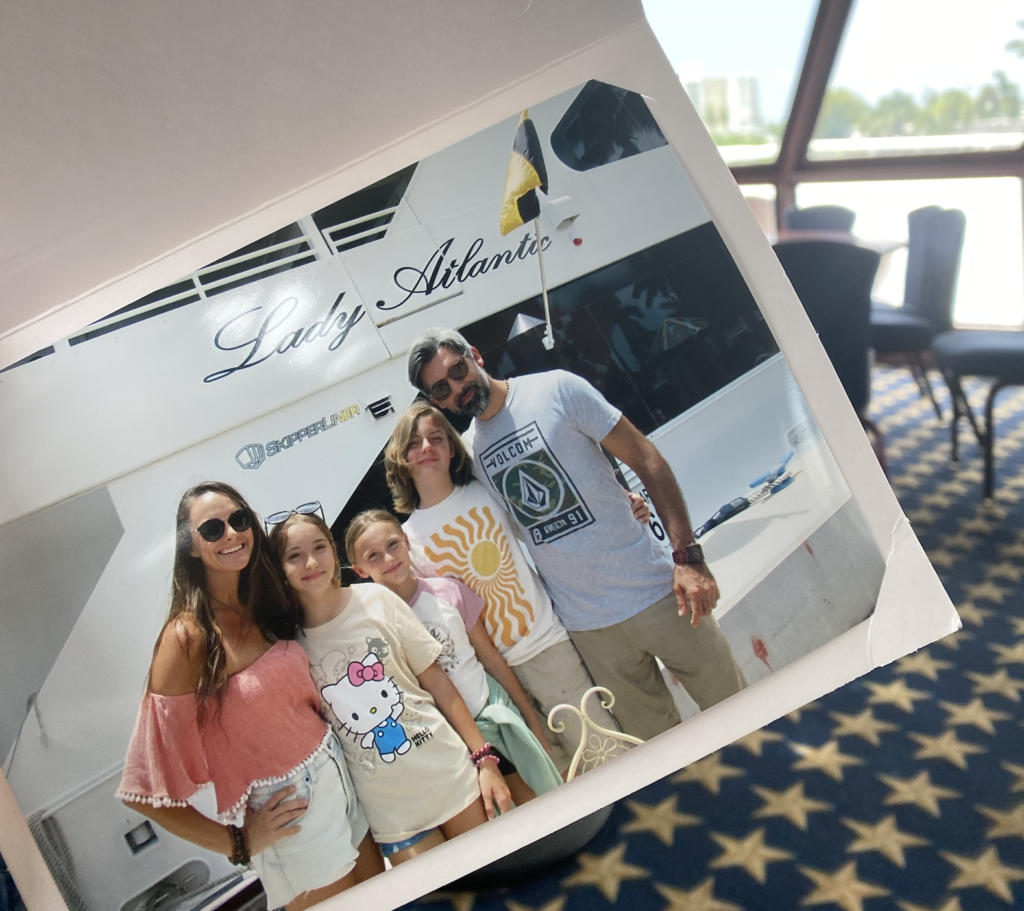
Once on board we walked around the entire vessel and then ordered drinks for a sail away toast! They offer a full cash bar (for Adults over 21 years of age with valid ID), non-alcoholic beverages, smoothies, and other drinks during the cruise. We enjoyed a couple of cocktails while the kids enjoyed some virgin daiquiris. We didn’t eat, but they did have a food menu with things from chips, candy and other snacks to sandwiches, hot dogs & salads. They do not allow any outside food or beverage to be brought aboard the yacht.
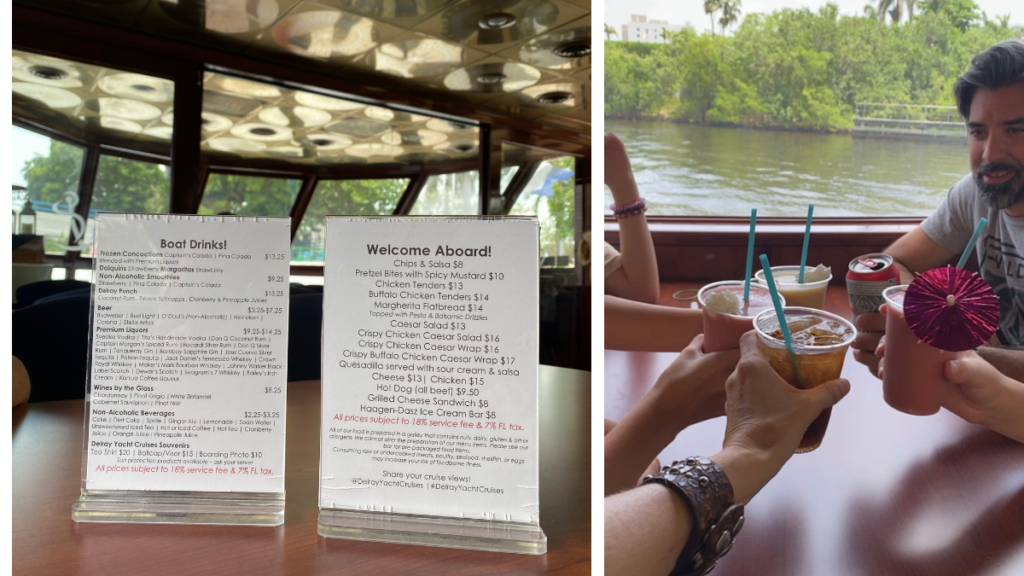
On the South leg of the trip, the tour was narrated, pointing on some of the famous homes and area’s history. Our kids enjoyed seeing the beautiful mansions and picking out which ones we would live in. On the ride back to Veteran’s Park, they stopped narrating and we enjoyed a relaxing trip soaking up the calmness and great weather.
View this post on Instagram A post shared by M̳a̳n̳d̳y̳ ̳M̳i̳c̳h̳e̳l̳l̳e̳ (@mandymcarter)
The Yacht is as beautiful as their Story
Delray Yacht Cruises is owned and operated by Captain Joe and Kerry Reardon. Captain Joe has worked on passenger boats for over 30 years, getting his Captain’s License at age 18. He spent many years in the operations side of the industry and eventually, along with his wife Kerry, purchased their first Boat in 2002.
Kerry is a native of Plymouth, Massachusetts, and her background is in the Food and Beverage Industry where she has worked in all areas of the profession. She has managed private upscale restaurants at some of Cape Cod’s most exclusive clubs catering to celebrities and professional athletes. Her vast knowledge of the Food and Beverage Industry coupled with Captain Joe’s three decades in the marine industry give them a rare combination of experience that is unrivaled in their profession. After going south to operate their boat in Florida for winters and returning north for the summer for several years, the Reardon’s eventually settled year round in Florida, operating the 90-foot Lady Delray and 105-foot Lady Atlantic that they had built in 2008. Delray Yacht Cruises has been named the number one sightseeing and charter company in South Florida.

Business Information
Delray Yacht Cruises offers year-round cruises from Veterans Park which is right off the popular Atlantic Avenue. Days and times of the cruises vary per season. It is recommended to make reservations in advance and arrive 30 minutes prior to your departure time.
Ticket Prices: $32 Regular Admission $29 Seniors & Children + tax.
Delray Yacht Cruises 801 E Atlantic Ave, Delray Beach, FL 33483 phone: (561) 243-0686 website

If you enjoyed this post, please share it with your friends!
Don’t forget to follow us on Facebook and Instagram for more family travel inspiration.
Disclosure: Our experience was complimentary but the opinions, fun and deliciousness expressed are all my own. This is not a sponsored post.
You May Also Like These
This disney location is worth it all, impressed our son with a stay at the castle hotel, panoramic ocean views perfect for st. croix sunrise, safari wilderness in central florida is truly an animal encounter experience for the entire family, cruising with kids aboard the carnival victory, jensen beach family vacation: hutchinson shores resort & spa, join the conversation.
- Pingback: Delray Beach with kids - 4 Day Itinerary - ACUPFUL
Leave a Reply Cancel reply
Your email address will not be published. Required fields are marked *
Save my name, email, and website in this browser for the next time I comment.
Sign me up for the newsletter!
Never miss a post!
Join our subscribers and get ACupful of Inspiration delivered to your inbox!
Check to confirm you are human
New Jersey Intracoastal Waterway
New jersey intracoastal - (njicw/njiww), cruising the njicw - manasquan to cape may.
The New Jersey Intracoastal Waterway (NJICW) stretches about 117.7 SM (102.3 NM) from Manasquan Inlet, located about 40 NM south of New York City, to the western entrance to the Cape May Canal on the Delaware Bay.
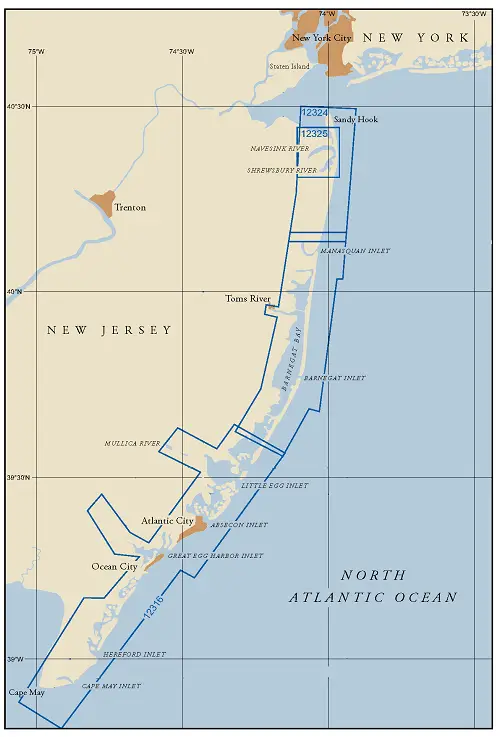
Beginning at Manasquan Inlet, the NJICW takes you up the Manasquan River before turning south and entering the Pt. Pleasant Canal which connects to the northern reaches of Barnegat Bay. Once through Barnegat Bay, it continues south taking you through a torturous winding route, reminiscent of the AICW in Georgia; passing through marshes and small bays until finally arriving in Cape May Harbor. From Cape May Harbor your route turns west into the Cape May Canal for about 3.7 SM before arriving at the Delaware Bay about 2 NM north of Cape May Point, NJ.
Aids to Navigation
Buoys and marks.
Navigation is fairly straight forward, New Jersey Intracoastal Waterway buoys and beacons are marked like most other lateral marks in the U.S. the difference is that either Yellow Triangles or Yellow Squares are added to the mark to indicate they are ICW markers.
The rule is: When proceeding south on the NJICW (Manasquan, NJ to Cape May, NJ), markers with yellow triangles are kept to starboard and yellow squares are kept to port at all times.
- “ Yellow Squares are ALWAYS kept to port”
- “ Yellow Triangles are ALWAYS kept to starboard”
Regardless of the Color of the Mark!
This becomes critically important when the ICW temporarily merges with or crosses a second navigable channel.
Lights and daybeacons should not be passed close aboard because those marking dredged channels are usually placed back from the bottom edge of the channel and others may have rip-rap mounds around them to protect the structures.
NOAA Charts #12324, #12316, and #12317 provide coverage of the New Jersey ICW from Sandy Hook, NJ south to Cape May. Chart #12317 provides a large scale harbor chart of Cape May.
Chart #12324 - NJICW - Sandy Hook to Little Egg Harbor provides coverage of the New Jersey Intracoastal Waterway from Mile Marker 0.0 in Manasquan, NJ to approximately Mile Marker 45.0 at Long Beach, NJ.
Chart #12316 - NJICW - Little Egg Harbor to Cape May provides coverage of the New Jersey Intracoastal Waterway from Mile Marker 45.0 in Long Beach, NJ to approximately Mile Marker 118.0 at Cape May, NJ.
Chart # 12317 - Cape May Harbor provides large scale coverage of Cape May Harbor.
Distances and Mileages
All distances along the New Jersey Intracoastal Waterway are given in statute miles unless otherwise noted. Statute miles are used in order to conform to the distances shown on the small craft charts typically used along this route.
The New Jersey ICW (southbound) is measured based on increasing mileage between Manasquan Inlet (MM "0.0") and the western end of the Cape May Canal (MM "117.7") which marks the official end the New Jersey Intracoastal Waterway.
Channel Depths
The proverbial fly in the ointment! Every effort is made to maintain a controlling depth of 6’ throughout the waterway, but due to continuous shoaling, depths of 3’ MLW may be found especially in the areas south of Barnegat Bay.
The Cape May Canal Project Depth is 12’ between Cape May Harbor and the Delaware Bay. Mariners should be aware that the last survey of the Cape May Canal, done in April 2013, showed a least controlling depth of 4.1 feet mid-channel with 1.2 feet in the left outside quarter, between Spicer Creek Canal and the Delaware Bay at MLLW.
Communications
Bridges – VHF Channel 13.
Bridges, Locks, and Overhead Power Lines
New jersey intracoastal waterway - bridge schedule.
From Manasquan Inlet to Absecon Inlet the minimum clearance found for fixed bridges is 60 feet. From Absecon Inlet south to the Delaware Bay, the minimum clearance is 35 feet.
The following table lists the bridges; their schedules, and restrictions along the New Jersey Intracoastal Waterway (NJICW).
The above table can be downloaded for your personal and private use. The New Jersey Intracoastal Waterway Bridge List contains the tables in Statute Miles, Nautical Miles, and Kilometers. The files are Zipped Adobe (.pdf) format.
NJICW Bridge Schedule - Download
Temporary Long Term Bridge Restrictions
New jersey intracoastal waterway - locks, new jersey intracoastal waterway - overhead cables and power lines.
At last count, there were (12) cable crossings on the NJICW. Manasquan Inlet south to Absecon Inlet (Atlantic City) the minimum authorized clearance found for overhead cables is 72 feet on the northern end of the Pt. Pleasant Canal. From Absecon Inlet south, the minimum clearance for overhead cables is 35 feet found at the Roosevelt Blvd. Bridge.
Tides and Currents
The tidal range varies by location, with areas near inlets having a higher range than in areas well away from the inlets. Manasquan Inlet has a mean tidal range of 4.0 feet, Barnegat Inlet at 2.2 feet, Atlantic City with 4.0 feet, and the Cape May Canal (western entrance) at 4.8 feet.
Caution should be observed during times of strong long duration winds as they may cause variations in tidal levels of as much as 3 feet below MLW and 3 feet above MHW.
Current velocities may reach 3 knots in the inlets and their connecting channels leading to the NJICW while in the back bays portion of the NJICW the currents are less.
Extra caution should be exercised when transiting the Pt. Pleasant Canal. A combination of strong tidal currents, heavy boat traffic, (2) lift bridges, direct and reflected waves, wakes, and chop all combined and packed into a steel bulk-headed canal about 1.8 miles long and averaging about 135’ wide will require a little more attention by the captain.
New Jersey’s Entrances, Inlets, and Passes
There are numerous Entrances, Inlets, or Passes between the deep waters of the Atlantic Ocean and the outer coastline of New Jersey. Between Sandy Hook in the north to Cape May in the south, there were 12 at last count. The principal shallow-draft entrances are Shrewsbury River inlet, Shark River Inlet, Manasquan Inlet, Barnegat Inlet, Absecon Inlet and Cape May Inlet. There are several others that are unimproved and/or require local knowledge to safely enter.
Most all provide access to sheltered inland waters as well as providing access to the New Jersey Intracoastal Waterway.
The best time to enter any New Jersey Inlet is on a rising tide with a smooth sea; passage can become extremely hazardous during easterly gales and heavy seas.
We have listed them on the next page along with useful information on each to aid you in deciding if you wish to use a particular inlet.

Intracoastal Cruises
Signed in as:
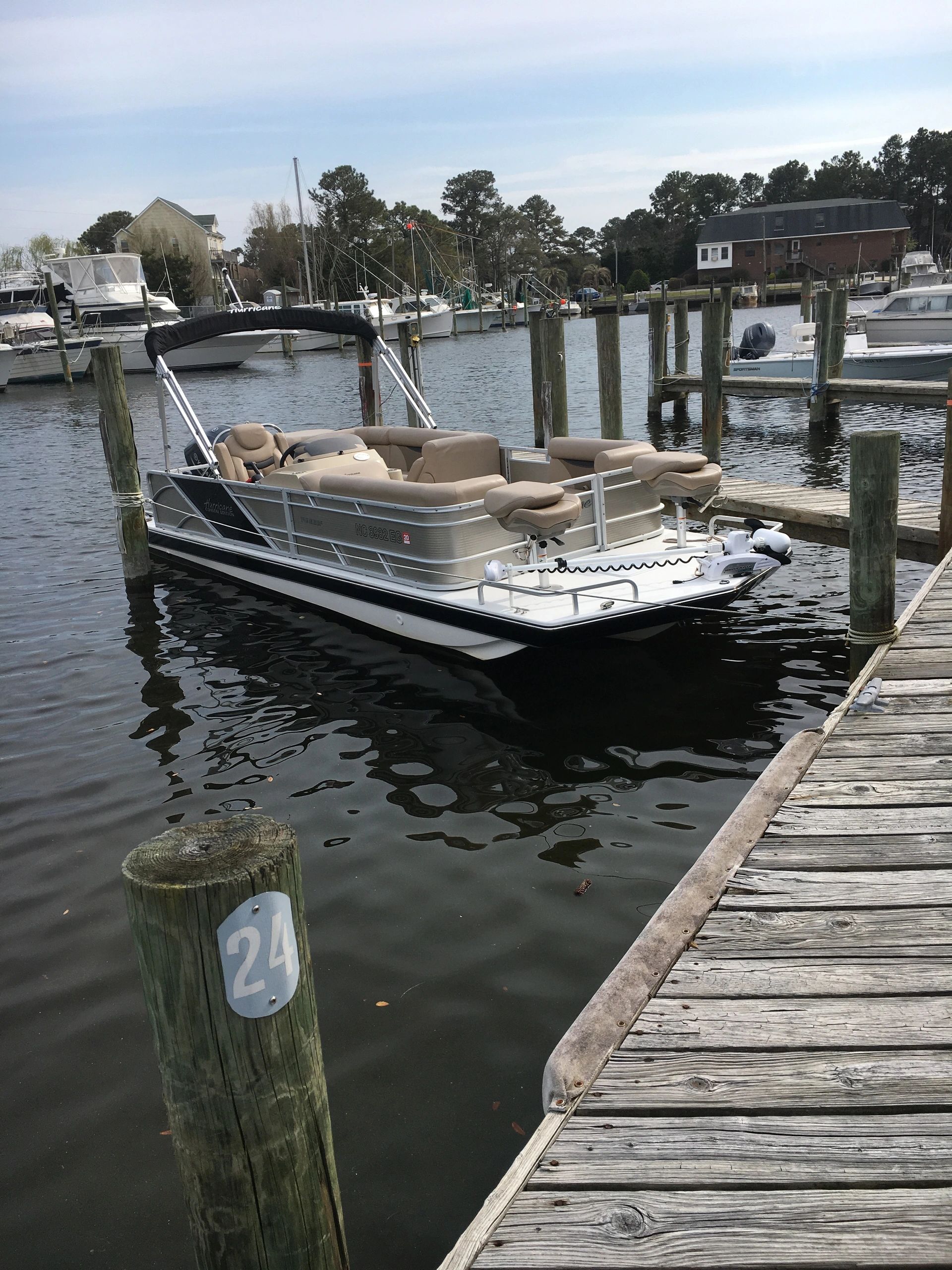
Capt. Bob welcomes you aboard! Charter a trip with us today!

Your Captain
Private tours.
Captain Bob really enjoys boating and showing our beautiful area to clients. Our coastal area is difficult to navigate, that's why boat rentals can come with unexpected costs and stress like damage or getting stuck on a sandbar. Book a boat charter with Captain Bob and enjoy the area without the responsibility of renting today!

Book a boat charter with us and see wildlife in action! It's not uncommon to see Dolphins, Sea Turtles, Pelicans, Cormorants, Hawks, Egrets and Herons (a few crazies too!). Go boating without the boat rental stress!
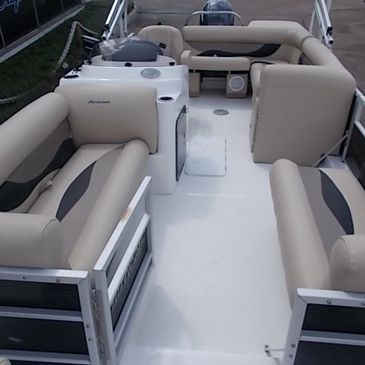
We only provide private boat charter tours, just you, your family and friends. We take the worries of getting out on the water. We take care of everything. Boat rentals and operating a boat can be very stressful, especially if you aren't familiar with the area. We give you a stress free memorable boating trip!
Photo Gallery
Frequently asked questions.
Please reach us at [email protected] if you cannot find an answer to your question.
We limit our guests to 6 passengers no exceptions.
2 hour cruise $250 additional hours are $100.
Yes, limited. Intoxicated passengers are a safety concern and may limit the length of the trip.
All passengers must remain on the boat at all times. We provide 2 - 3 hour pleasure cruises and nature tours from the safety of the boat.
Sure! Please remember we are offering relaxing pleasure cruises, it's your time I will do whatever you would like (I'm a fisherman too!). Also, remember to have a license! You will need a Coastal Recreational Fishing License .
You can bring a small cooler and any snacks you like!
We have a pop up room with a toilet and hand washing. Cologne and mints not included.
A $50 deposit is required to secure your charter online.
Balance is required prior to leaving the dock.
At the dock: Cash , Apple pay , Venmo and CashApp are accepted.
Unfortunately we cannot accept credit cards at the dock.
Sorry we do not allow pets and smoking is allowed with care. Absolutely nothing that didn't come from the water goes in the water. You must stay on the boat at all times. Please see our Terms and Conditions below for details.
ABSOLUTLY NO BANANAS IN ANY SHAPE OR FORM! Not even a picture of a banana! Bad Juju! A little history: Why are Bananas Bad Luck on a boat, is an unusual nautical superstition that began in the 1700’s that is still persistent today. When trade ships sailing from the Caribbean & Spain started to disappear, bananas would be the only thing found floating amongst the wreckages. Seafarers believed the bananas had caused the ship to sink (I'm not taking any chances...).
We understand that things can happen and weather can be unpredictable.
If you cancel:
We will refund the full amount less any charges we incur from any processing of the payment if the trip is canceled by you within 4 hours of your scheduled departure. Refunds for last minute cancelations or "No shows" will be at the discretion of Capt. Bob.
If WE cancel: If we cannot reschedule with you, we will refund fully your payment.
Please see terms and conditions.
NC and the Coast Guard require all children younger than 13 to wear life jackets while underway . These are offshore type and are required you cannot supply your own. I have three (3) life jackets for children under 90 lbs. I also have one (1) infant life jacket. Of course, every soul counts towards the 6 passenger limit.
Drop us a line!
This site is protected by reCAPTCHA and the Google Privacy Policy and Terms of Service apply.
Better yet, book a memorable trip now!
Capt. Bob (910) 358-0942 for boat charters
Old Ferry Marina, 150 Old Ferry Rd, Sneads Ferry, North Carolina 28460
Phone: (910) 358-0942 Email: [email protected]
Send a 2 hour gift card to friends and family or buy it now for your future use.
Copyright © 2024 Intracoastal Cruises - All Rights Reserved.
Powered by GoDaddy
- Privacy Policy
- Terms and Conditions

Let Us Tell You a Story
A little about us.
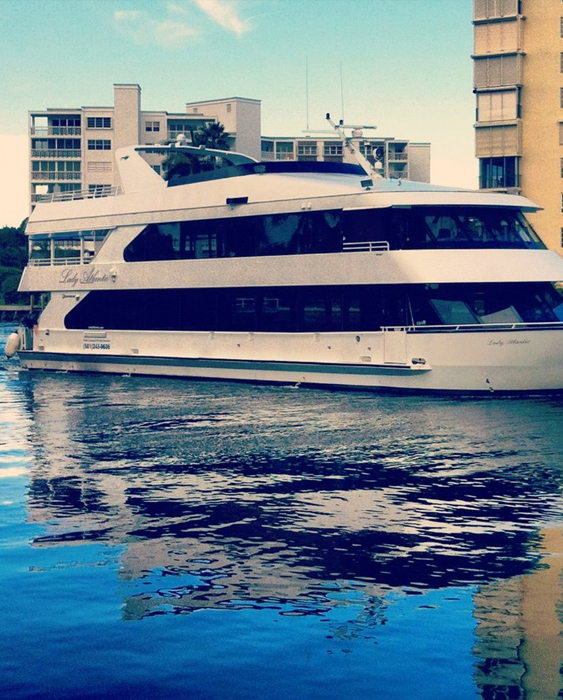
Delray Yacht Cruises
Delray Yacht Cruises is owned and operated by Captain Joe and Kerry Reardon. Captain Joe has worked on passenger boats for over 30 years, getting his Captain’s License at age 18. A native of Duxbury, Massachusetts, Captain Joe earned his experience operating Sightseeing, Charter and Whale Watch Boats in Plymouth, MA. He also spent many years in the operations side of the industry and eventually, along with his wife Kerry, purchased their first Boat in 2002.
Kerry is a native of Plymouth, Massachusetts, and her background is in the Food and Beverage Industry where she has worked in all areas of the profession. She has managed private upscale restaurants at some of Cape Cod’s most exclusive clubs catering to celebrities and professional athletes. Her vast knowledge of the Food and Beverage Industry coupled with Captain Joe’s three decades in the marine industry give them a rare combination of experience that is unrivalled in their profession.
After going south to operate their boat in Florida for winters and returning north for the summer for several years, the Reardon’s eventually settled year-round in Florida, operating the 105-foot Lady Atlantic that they had built in 2008. Delray Yacht Cruises has been named the number one sightseeing and charter company in South Florida.
Our clients say
“We had a wonderful time, the weather was perfect and the young ladies on gentleman on board were excellent hosts. I’ve recommended you and your cruise line to three other tennis clubs in my area. I know at least two of them will contact you. We’ll look into doing this again.”
“Just to let you know, we had such a great time on Thursday night. All the members loved the trip — and can’t wait to do it again. Again, many thanks. “
“Thank you so much. You did a great job and I will 100% recommend you for another occasion. You made everything very nice.”
“This is the first opportunity I have had to write about the wonderful evening our group had. Everyone at the hospital is still talking about the graciousness of the staff, music, being on the main salon and looking out on the beautiful intracoastal made it a night to remember.”
“Thank you so much for all your work on Tuesday. I had wonderful time and so did everyone else. Perhaps next year we can do the trip going North. Thanks again to you and Sarah and your crew for a great job.”
“I just want to thank you for making our cruise so special. The food was delicious and the little area you gave us worked out great. My friends really enjoyed the day. Thanks again”
“On behalf of the British Women’s Club, I would like to express our sincere thanks for a fantastic sailing/brunch that was enjoyed by everyone in our group this past Sunday. Your staff were so friendly, courteous and helpful, which always makes for a more enjoyable experience, and we will certainly keep you in mind for our future outings!”
“Everyone loved it, and had a great time. Thanks for all of your efforts, and for coordinating everything. Many thanks to the Captain as well for flying the Jolly Roger, that was really great. Thanks to all the rest of the crew too, it really was a lot of fun.”
“We all had a great time… My family had a great time, thanks to you and your staff! We will definitely recommend Delray Yacht Cruises to our friends. Pleasure working with you, everything went so smoothly.”
Thank you for all your help. We had a great time!”
“We were so very pleased with every aspect of our brunch cruise aboard the Lady Atlantic. Many thanks to each and every member of your team for making last Sunday so enjoyable and memorable”
“We had a wonderful time. Everything was perfect!”
We felt that the experience was first rate. The staff, service and food were all excellent. We have gotten wonderful feedback from our guests about it. Thank you so much. We’ll be back for a special occasion soon.
“We felt that the experience was first rate. The staff, service and food were all excellent. We have gotten wonderful feedback from our guests about it. Thank you so much. We’ll be back for a special occasion soon.”
Email Address:
Phone Number:

- Find Us On Facebook
- Find Us On Instagram
- Watch Us On YouTube
- Find Us On LinkedIn

Intracoastal friendly boats
A helpful guide… primer 101.

The requirements?
- If you have a relatively larger offshore capable boat it’s quicker and also easier to go offshore. You pick a good weather window and you can always duck in to an inlet which are sprinkled at random locations as you head south (Or North–as the case may be).
- Be aware of your exact air draft. (Article link below)
- Use our electric, folding antennae option to provide assured clearance–available as an option on all of our catamaran and monohull models. Short video here
Boats in our stable that can make it
Catamarans (easy–shoal draft):.
- Fountaine Pajot 40, Lucia –designed for this.
- Fountaine Pajot 44 (Helia) IC model. We have a custom option which only reduces sail area by about 4%–see separate blog.(This is now the largest (by volume), Intercoastal friendly Cat available.)
Monohulls (Choose shoal draft versions–our standard):

- Our discussion of the factors that affect air draft which includes the folding antennae option. Click here .
- A great on-line, facilities guide in a user friendly format. Click here .
- A great overall guide. Click here .
Senior Sales Consultant, Partner [email protected] 410-703-5655 More from Eric >> Boat Business Webinars, Videos, Blogs, Learning center and more.
Disclaimer : The information, views , opinions , and conclusions expressed in any article , blog, video, or other form of media posted or linked herein are those of the authors and do not necessarily reflect the views of Atlantic Cruising Yachts, LLC. Nothing contained herein has been approved or otherwise endorsed by Atlantic Cruising Yachts, LLC and such company shall have no liability for any content.
ESE, LLC is totally responsible for the content of this article. We are not tax advisers. You should obtain tax advice from a professional tax adviser for any matters relating to setting up a business, or tax implications .
Notice of Use of Cookies
We use cookies and similar technologies to recognize your repeat visits and preferences, as well as to measure the effectiveness of campaigns and analyze traffic. To learn more about cookies view our Privacy Policy . By continuing to use our site, you consent to the use of cookies.

My Cruiser Life Magazine
The Best Boat for the Great Loop in 2023: Your 6 Boat Options
Embarking on this nautical quest called the Great Loop demands more than wanderlust alone. Selecting the optimal vessel to navigate the Loop’s diverse waterways makes all the difference on this marathon route. Whether you covet the comforts of a spacious trawler, prefer the performance of an agile cruiser or need maximum versatility to “trailer hop” inland rivers, the choice of boat profoundly impacts the journey. In today’s post, I give my recommendations the perfect Great Loop boat.
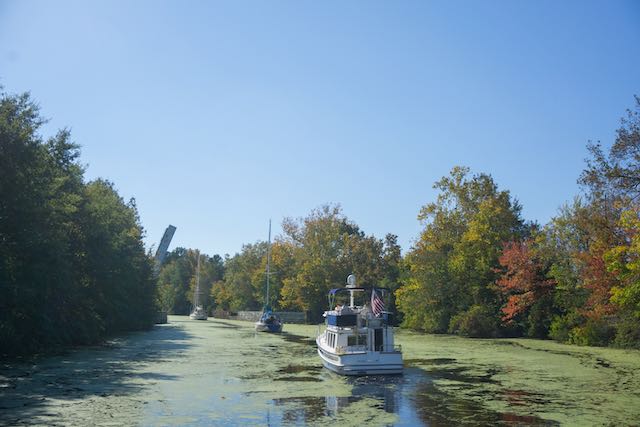
Table of Contents
6 best boat types for the great loop, what is the great loop, what is involved with the great loop boating adventure, classic trawlers, fast trawlers and downeasts, tug style trawlers, cruisers and motor yachts, power catamarans, the boat you’ve got, great loop size limits, comfortable cabin aboard and long-term living space, engine choices: gas vs. diesel, single vs. twin, 1. draft and height limitations, 2. fuel range and efficiency, 3. living quarters, 4. navigability and handling, 5. type of boat, 6. accessibility and safety features, 8. personal preferences and experience level, 9. research and planning, boat requirements for the great loop, which is your best boat for the great loop, best boat for the great loop faqs.
- Unconventional Boats
The Great Loop stands as one of the premier long-term boating adventures in North America, and arguably, across the globe. Spanning over 6,000 miles, this journey offers boaters an experience akin to a cross-country RV road trip, but on water. It presents a unique opportunity to view the countryside through a different lens, as you navigate through a mix of seaways, canals, and rivers at a relaxed pace.
Let’s explore the ideal boats to embark on this remarkable journey.
Let’s get this out of the way – what’s the Great Loop in the first place?
The Great Loop is an adventure for recreational boaters that takes you on a giant circuit of the eastern half of the United States and Canada . It’s the joining of many smaller waterways, open water stretches, rivers, and canals to make an entire journey that’s about 6,000 nautical miles long.
Where you begin and end your Great Loop journey usually depends on where you buy or keep your vessel.
Here’s an overview using Norfolk, Virginia, as the starting point.
- Norfolk northbound through Chesapeake Bay, through the C&D Canal, and seaward on Delaware Bay to Cape May, New Jersey.
- Northbound along the Atlantic coast of New Jersey to New York harbor.
- North on the Hudson River to upstate New York. From here, you have several choices depending on how one wants to transit the Great Lakes and how much of the Canadian Heritage Canals one would like to cruise.
- Westbound through the Erie Canal.
- West through the Great Lakes to Chicago.
- South from Chicago through the inland rivers to the Gulf Coast.
- Eastbound along the Gulf Coast to Florida, then southbound on the Gulf Intracoastal Waterway.
- Either through the Okeechobee Waterway in south Florida or around the tip of the state, through the Florida Keys.
- North from south Florida on the Atlantic Intracoastal Waterway (ICW) back to Norfolk.
There are many choices to make the Great Loop your own adventure.
Loopers usually put between 5,000 and 7,000 miles under their keels while making the trip. However, it’s not a race, and there are plenty of opportunities to make side trips and adventures off the main route.
For example, the Downeast Loop is an extension that adds Maine, Nova Scotia, and Prince Edwards Island. The St. Lawrence Seaway will then take you west to the Great Lakes by way of Montreal. Another good example is extending your trip on the south end by adding an adventure in the Islands of The Bahamas.
For the most part, the Great Loop is a motorboat adventure . There are many open water spaces where you might sail, but it’s often constrained to a narrow navigable channel, making sailing much less appealing. In other words, even sailboats wind up motoring for most of the trip.
Furthermore, the trip transits canals and waterways with many bridge spans, both fixed and opening. The fewer bridges you have to have open for you, the easier your trip. Many fixed bridges mean you’ll have to take the mast off for long sections of the trip.
The trip spans many rural areas, interspersed with small towns and a handful of big cities. Many nights you’ll be anchored or docked in the middle of nowhere. Other times, you’ll have a new city to explore and check out.
Your boat should suit both styles. You will want the best family boat that is comfortable to live on, with sleeping, bathroom, and cooking facilities that you and your crew find comfortable. Yes, you can do the Loop in an open go-fast boat–but you will miss what many consider the best parts of the Loop.
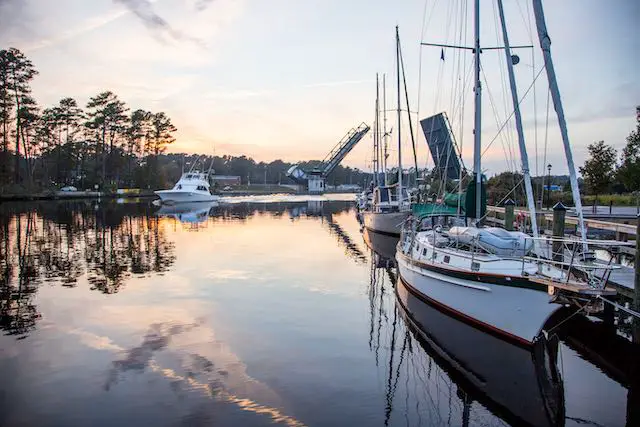
Six Best Great Loop Boat Options By Type of Boat
There are too many makes and models of boats in the world for anyone to make a specific recommendation here. Instead, here is a list of six types of boats you’ll find doing the Loop and what makes them well suited for this particular adventure.
Remember, this is anything but an all-inclusive list. There are hundreds of boat makes out there, hundreds more that aren’t built anymore but can be bought used, and even more when you include custom and one-off designs. These lists are provided simply as a starting point for your research!
The classic trawler is basically the power version of a sailboat–slow-moving, heavy, and economical to operate. They have been around forever; tons were built in the 1970s and 1980s, many in Taiwan. That means that the design is time-tested–they are good-looking and seaworthy. Plus, you can readily find them on the used market for reasonable prices. Most have a maximum speed of about 10 knots.
The popular cruising blog Scho and Jo have set out and completed the Loop on their Albin trawler. Check out their Great Loop expenses for information on the adventure and how it’s done. For more about their boat, check out their boat tour.
Examples of Classic Trawlers:
- Monk 36 (no longer built)
- Grand Banks
- Camino Troll (no longer built)
- Nordhavn 40
The fast trawler is a classic one with a modern hull. Thanks to their improved hull design, they’re capable of faster speeds but use a lot of gas going fast. The best thing about them is probably the simple fact that they can do both comfortably–go slowly and economically or cruise faster (about 15 knots) while still giving a nice ride.
Examples of Fast Trawlers and Downeast Boats:
- Beneteau Swift Trawlers
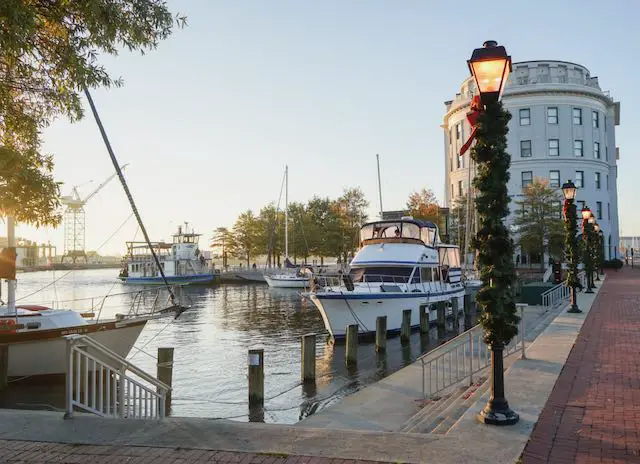
What was once a unique niche in the boating world has caught on, and quite a few companies are now making tugboat-looking trawlers. They’re sportier than the traditional trawler and have an aesthetic that looks right at home on the rivers of the Great Loop.
Examples of Tugs Include:
- Kadey Krogen
- Lord Nelson Victory Tug (no longer made)
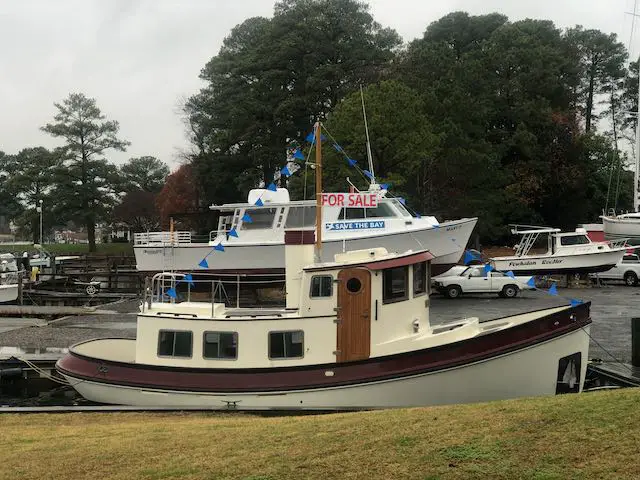
A cruiser is built on a planing hull to go faster. That means more miles per day, fewer nights at anchor, and more fuel consumption while doing it.
There are many sizes and styles that are appropriate for the Loop, so the key is to find the layout that is most comfortable for you. The two most popular styles include express cruisers and aft-cabin cruisers.
Examples of cruisers and motor yachts include:
- Sea Ray (many of the best models for the Loop are no longer made)
- Cruiser Yachts
- Bayliner Motoryachts (no longer built)
- Hatteras Cruisers (no longer built)
Power catamarans are popular for the same reason that sail cats are. Thanks to their increased interior volume, two hulls make for a more comfortable living space. Your beam should be less than 23 feet, as the Trent Severn Waterway in Canada limits this. Still, that leaves several interesting power cats that would make fantastic Loop boats.
Examples of power cats that would be good when boating the Great Loop:
- PDQ 34 Power Catamaran (no longer built)
- Endeavour 440 TrawlerCat
Finally, it has to be mentioned that the best boat is always the boat you’ve got. Lin and Larry Pardey once famously said, “Go small, and go now.” If the Loop is on your bucket list, it’s better to find a boat you can get your hands on that will suit you well enough to travel and enjoy the ride. Don’t spend years saving up for a “maybe adventure.”
Examples of unconventional Looper boats:
- Jet skis that camp along the way
- Open runabouts, sport boats, and fishing boats
- Sailboats–just take the mast off and motor like a trawler!
- Trailerable boats that do it in sections–a trailerable boat lets you do a section and then tow the boat to the next section to cruise at your leisure
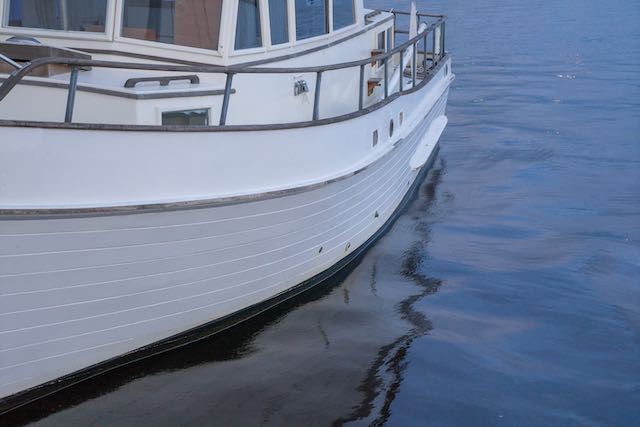
What Features Make Good Looper Boats?
So, how do you ever choose the right boat for the Loop? Here are some thoughts on what features make the best Looper boats.
The limits for your perfect Looper boat will be based on its physical dimensions. According to the Loop Cruiser’s Association, the average looper boat is 39.5 feet long, with more than half between 35 and 45 feet. But this doesn’t tell the whole story, as you must consider each vessel’s dimension.
Air Draft (Bridge Clearance or Height Above Water)
The most limiting fixture on the Loop is a fixed railroad bridge in Chicago that will block any vessel taller than 19 feet, 6 inches.
But, if you want to do the entire Erie Canal, two bridges offer only 15 feet, 6 inches. Another bridge in downtown Chicago is 17 feet. So, the Loop has lower limits, but most can be gone around by bigger boats.
Four feet or less of draft is ideal and will mean the fewest problems–although caution is still warranted in many areas. Draft is how deep the hull sits in the water and dictates the minimum water depth for a boat . Any deeper than that, and you will need to be extra cautious. Boats with six-foot drafts have reportedly done it, but few recommend it.
The width of your boat is usually limited to about 16 feet due only to marina slips.
Catamarans with 23 feet or less can make the trip but require T-heads at most marinas. As a result, finding slips on this trip will be difficult, and finding a place to haul out for boat maintenance is even harder. In addition, there are sections where you’ll need to take a slip occasionally, so anchoring isn’t always an option.
There’s no limit to length. Some yachts up to 70 feet have made the journey, but it’s a tight fit and most boats that long won’t make it under the bridges. Most Looper boats are under 50 feet, after all, for many reasons.
Think of the Great Loop as an RV adventure where you’re taking your home with you. To that end, realize you’ll be spending a lot of time living aboard your boat. Therefore, the boat should be comfortable, with indoor and outdoor living space and all the amenities you’d want or need.
Here’s a list of things most people want their boat equipped with when they set off on the Great Loop. Many of these are similar to the considerations people make when living on a sailboat , but some are quite different.
- A comfortable bed, usually an “island queen” (not a v-berth)
- A large galley (kitchen) with plenty of cooking space and the appliances they’re used to (fridge, microwave, coffee maker, stove, oven, etc.)
- A comfortable living room (salon) that has a good view, lots of light, and plenty of ventilation
- An outdoor patio (cockpit) area for open-air dining, socializing, and relaxing
- A descent-sized bathroom area with a separate shower
- Air conditioning and heating (which may require a generator if you plan to anchor overnight extensively)
- Inside and outside helm positions (upper deck on a trawler)
Tankage refers to your boat’s storage space for liquids–water, fuel, and sewage. The larger the tanks are, the longer you can stay away from marinas for refills or pump-outs.
The Loop has several long stretches through the inland river system that go hundreds of miles between facilities and services. Therefore, your boat should have a fuel range of at least 450 nautical miles and hold enough water for at least a week.
Some river stretches have fewer gasoline sellers, meaning gas-powered boats need a greater range than diesel boats. They’ll need about 450 miles of range, whereas diesel boats can get by with less.
Beyond that, gas and diesel engines will both work fine on the Loop. Generally, the most popular trawlers and boats of this size come with diesels, which are praised for their longevity and reliable, simple operation. In addition, diesel is safer on a boat because it is less explosive, which could lower your insurance premiums.
Likewise, having a single or twin screw boat is a matter of preference. Single-engine boats can make the journey without problems, but two engines give you redundancy should something go wrong with one and better maneuverability in tight spaces. But, of course, operating and maintenance costs are higher with two engines.
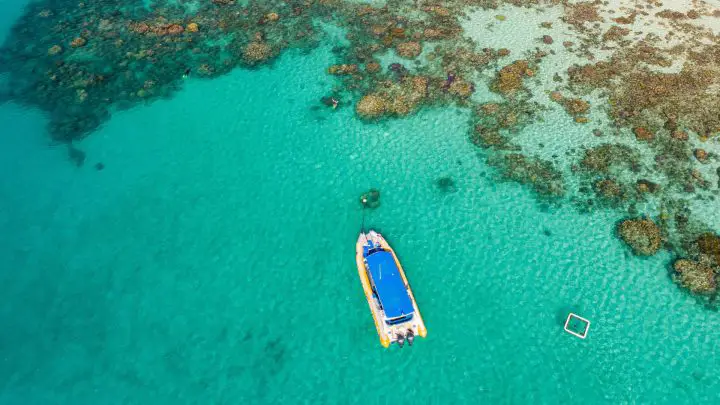
How to Find the Best Boat for You for Sailing the Great Loop
The ideal boat will vary based on personal preferences, budget, and specific requirements for the journey. Here are key considerations to help you find the best boat for your Great Loop adventure:
- Draft: The Great Loop has areas with shallow waters, especially in places like the western rivers and parts of the Intracoastal Waterway. A boat with a shallow draft (ideally less than 5 feet) will have more flexibility and fewer navigation concerns.
- Air Draft: Bridges with fixed heights are a consideration along the Great Loop. To avoid detours, your boat’s air draft (the height from the waterline to the highest fixed point on the boat) should be less than 19 feet, though lower is often better to accommodate all routes.
- Opt for a fuel-efficient boat that has a range of at least 300 miles to comfortably reach fueling stations along the Loop without anxiety, considering both the boat’s fuel capacity and its consumption rate.
- Comfort is key for the long journey. Look for boats that offer adequate living space, a functional galley, comfortable sleeping quarters, and sufficient storage. The size and amenities should match your tolerance for space constraints and your lifestyle needs.
- Choose a boat that handles well in various water conditions. Both inland rivers and lakes, as well as coastal sections of the Loop, can present challenges like currents, tides, and weather changes.
- Trawlers, Sailboats (with a retractable mast for bridges), and Motor Yachts are popular choices because they balance living space, fuel efficiency, and navigability.
- Sailboats can offer the advantage of wind power but consider the need to lower the mast for certain sections of the Loop.
- Catamarans are another option, offering stability, shallow draft, and spacious living areas, but be mindful of their beam (width) and how it may limit access to certain marinas or slips.
- Look for boats with easy access to the bow and stern, strong handholds, and a cockpit or helm that offers good visibility and protection from the elements.
- Safety features should include reliable navigation and communication systems, life-saving equipment, and possibly a dinghy for exploring shallow or narrow areas.
- Consider both the purchase price and the ongoing costs, including maintenance, fuel, marina fees, and potential upgrades. Buying a used boat can be a cost-effective option, but ensure a thorough inspection to assess its condition and suitability for the Loop.
- Your comfort with the boat’s operation, maintenance requirements, and overall feel is crucial. Choose a boat that fits your level of boating experience or one that you’re willing and able to learn to handle confidently.
- Join forums and groups, such as America’s Great Loop Cruisers’ Association (AGLCA), to gain insights from experienced Loopers.
- Consider renting or chartering different types of boats for short trips to gain firsthand experience before making a decision.
- Size/Draft: Boats should generally be less than 60 feet with a draft of 6 feet or under to navigate the various locks, rivers, and waterways along the route.
- Propulsion: Twin engines or a single engine with a bow or stern thruster provides the best maneuverability and redundancy for covering long distances.
- Fuel Capacity: A range of 350-400 miles between refueling is recommended to have a buffer given the distances between marinas in some regions.
- Accommodations: Comfortable sleeping quarters, a functional galley, and enclosed head are needed for multi-day and multi-week trips.
- Hull Type: Displacement hull trawlers, cruisers, and motor yachts are well-suited for the journey. Planing hulls can complete it but will take a fuel efficiency hit at slower canal speeds.
- Navigation: GPS chartplotters, radar, depth finders, and other instruments and marine electronics for navigating varying conditions.
- Operation: Vessel and systems should be completely reliable and redundant where possible given the several thousand mile journey.
- Insurance/Documentation: Vessel documentation and insurance is required for coastal, Great Lakes portions.
Hopefully, this article has provided some ideas and examples of what your best Great Loop boat might be. Beyond a few hard limitations, it’s a matter of taste and style. There’s no right or wrong answer–you’ll often see many unexpected vessels doing the Loop.
If you’re considering the Loop, check out the America’s Great Loop Cruisers Association for more details.
What size boat is best for the Great Loop?
There’s no set size limit for length, but all boats looking to complete the Loop must pass under a low fixed bridge in the Chicago area. If your boat is more than 19 feet, 6 inches above the water, thou shall not pass.
What is the largest boat to complete the Great Loop?
Some people have reported that boats as long as 70 feet have completed the Loop. But taking a vessel of this size is not recommended, as you must navigate numerous tight locks and low bridges along the route. Most Loopers choose boats less than 50 feet long.
What is the smallest recommended boat for the Great Loop?
The smallest boat is the one that you’re comfortable on. Jet skis have completed the Loop, but they’re limited to staying in hotels or camping. It’s best to have a boat that will be comfortable to live on for the better part of a year. Most people want a boat at least 35 feet long to do that.
What is the average time to complete the Great Loop?
Most cruisers take about a year to do the Loop. Several factors affect this plan, and it’s always an individual choice. Generally, you’ll be northbound in the spring to be westbound through the Great Lakes in the summer. Then you “fall down” the rivers in the autumn so that you can over-winter in Florida. But many people take breaks, leave their boats in storage, and complete the Loop in sections. Furthermore, many folks want to take their time and enjoy the scenery. It’s not a race, after all.
Matt has been boating around Florida for over 25 years in everything from small powerboats to large cruising catamarans. He currently lives aboard a 38-foot Cabo Rico sailboat with his wife Lucy and adventure dog Chelsea. Together, they cruise between winters in The Bahamas and summers in the Chesapeake Bay.
Leave a comment
Your email address will not be published. Required fields are marked *
Save my name, email, and website in this browser for the next time I comment.

Victor Mukhin
- Scientific Program

Title : Active carbons as nanoporous materials for solving of environmental problems
However, up to now, the main carriers of catalytic additives have been mineral sorbents: silica gels, alumogels. This is obviously due to the fact that they consist of pure homogeneous components SiO2 and Al2O3, respectively. It is generally known that impurities, especially the ash elements, are catalytic poisons that reduce the effectiveness of the catalyst. Therefore, carbon sorbents with 5-15% by weight of ash elements in their composition are not used in the above mentioned technologies. However, in such an important field as a gas-mask technique, carbon sorbents (active carbons) are carriers of catalytic additives, providing effective protection of a person against any types of potent poisonous substances (PPS). In ESPE “JSC "Neorganika" there has been developed the technology of unique ashless spherical carbon carrier-catalysts by the method of liquid forming of furfural copolymers with subsequent gas-vapor activation, brand PAC. Active carbons PAC have 100% qualitative characteristics of the three main properties of carbon sorbents: strength - 100%, the proportion of sorbing pores in the pore space – 100%, purity - 100% (ash content is close to zero). A particularly outstanding feature of active PAC carbons is their uniquely high mechanical compressive strength of 740 ± 40 MPa, which is 3-7 times larger than that of such materials as granite, quartzite, electric coal, and is comparable to the value for cast iron - 400-1000 MPa. This allows the PAC to operate under severe conditions in moving and fluidized beds. Obviously, it is time to actively develop catalysts based on PAC sorbents for oil refining, petrochemicals, gas processing and various technologies of organic synthesis.
Victor M. Mukhin was born in 1946 in the town of Orsk, Russia. In 1970 he graduated the Technological Institute in Leningrad. Victor M. Mukhin was directed to work to the scientific-industrial organization "Neorganika" (Elektrostal, Moscow region) where he is working during 47 years, at present as the head of the laboratory of carbon sorbents. Victor M. Mukhin defended a Ph. D. thesis and a doctoral thesis at the Mendeleev University of Chemical Technology of Russia (in 1979 and 1997 accordingly). Professor of Mendeleev University of Chemical Technology of Russia. Scientific interests: production, investigation and application of active carbons, technological and ecological carbon-adsorptive processes, environmental protection, production of ecologically clean food.
Quick Links
- Conference Brochure
- Tentative Program

- Phone: +90 (212) 875 19 08
- E-Mail: [email protected]
- Company Profile
- Company Policy
- Mission and Vision
- Certificates
- Aluminium Windows
- Aluminium Doors
- Aluminium Sliding Elements
- Aluminium Curtain Walls
- Aluminium Skylight Elements
- Aluminium Frames for Safety and Security
- Aluminium Conservatories
- Metal Panel Sheet Claddings
- Aluminium Entrance Frames
- Glass Structures
- Complementary Items
- Lightweight Steel Structures
- Human Resources OPEN

Project Description
Project name:, year of construction:, contractor:.

IMAGES
VIDEO
COMMENTS
The Atlantic Intracoastal Waterway (AICW), referred to as the "Ditch," is the most common and popular route for boaters cruising from the Chesapeake Bay to Florida. Officially the AICW starts in Norfolk, VA and ends in Key West, FL. Explore the best that marinas along the Atlantic ICW have to offer with Marinalife's pre-planned cruise ...
Oct 16, 2018. Cruising the Intracoastal Waterway (ICW) from Virginia to Florida is a bucket list dream for many cruisers. While the prospect of making the trip of more than 1,000 nautical miles may seem daunting, it needn't be intimidating. Essentially it is just a series of day trips, and each year thousands of cruisers make the run.
The 3,000-mile Intracoastal Waterway (ICW) -- affectionately known as "The Ditch" -- is an inland network of rivers, canals, bays and inlets along the Atlantic and Gulf of Mexico coastlines ...
Channels. The Federal project depth for the Florida segment of the Atlantic Intracoastal Waterway provides for the following depths: St. Marys River to Ft. Pierce - 12 feet. Ft Pierce to Miami - 10 feet. Miami to Cross Bank - 7 feet. The actual controlling depths in the channels may vary due to shoaling.
Friday, November 1, 2013 - 13:45. Just getting there is more than half the fun, when you're cruising south on the Intracoastal Waterway (ICW), a 1243-mile waterway that connects rivers, canals, sounds and land cuts on the Atlantic coast. Pristine anchorage off the Waccamaw River south of Myrtle Beach, SC.
On this 8-day Historic South and Golden Isles Cruise sailing between Charleston, SC to Amelia Island, FL aboard either the 100-passenger American Star or 100-passenger American Independence, explore the Intracoastal Waterway, home to some of the most beautiful historic cities in America, is a protected network of bays, rivers, and canals.
On the east coast, the Atlantic Intracoastal Waterway is a busy highway in the autumn and spring. The snowbirds flock south in the fall, gathering on the Chesapeake to head south after the Annapolis Boat Show in October and get to Florida as the hurricane season ends in late November.
It is most common to cruise the great loop in a counter-clockwise direction to take advantage of the natural flow of the Gulf Stream and (generally) southbound flow of the inland rivers. There is a traditional "official" route. The Atlantic Intracoastal Waterway (occasionally AICW) is used on the Atlantic coast of the United States.
The Atlantic Intracoastal Waterway (Atlantic ICW) is a continuous and mostly protected navigable route from Norfolk, Virginia, to Miami, Florida. Originally conceived in 1802 for commercial use, today it is primarily used by recreational vessels. ... When combined with the Chesapeake Bay, a boater can cruise from Baltimore, Maryland, to Miami ...
Boater Tips & Education. Mile 0: Elizabeth River. For southbound boats, the first 200-mile-long stretch of the Atlantic Intracoastal Waterway (AICW) between Mile Marker 0 at Norfolk and... Read More. How to Throw a Dock Line. The ability for each crew member to competently throw a line is an extremely helpful skill, even empowering, since many...
Atlantic Intracoastal Waterway (Norfolk, VA to Key West, FL) A cruising and navigation guide to the AICW's 1,002 NM (1,153 SM / 1,856 KM) route along the east coast of the United States. Including navigational charts, aids to navigation, distances and mileages, communications, bridges and locks along with their schedules and restrictions from ...
The 2-hour narrated sightseeing tours cruise through South Florida's Intracoastal Waterway. These cruise are open to the public and take place all year and allow you to experience the calm waters of the Intracoastal Waterway aboard the Lady Atlantic or Lady Delray. ... Delray Yacht Cruises 801 E Atlantic Ave, Delray Beach, FL 33483 phone ...
The New Jersey Intracoastal Waterway (NJICW) stretches about 117.7 SM (102.3 NM) from Manasquan Inlet, located about 40 NM south of New York City, to the western entrance to the Cape May Canal on the Delaware Bay. Beginning at Manasquan Inlet, the NJICW takes you up the Manasquan River before turning south and entering the Pt.
Take 2 hours or more out to relax with family and friends with a private cruise of the Intracoastal Waterway! Affordable pricing! Book a boat charter today! Capt. Bob welcomes you aboard! Charter a trip with us today! ... Intracoastal Cruises. Old Ferry Marina, 150 Old Ferry Rd, Sneads Ferry, North Carolina 28460. Phone: (910) 358-0942 Email ...
Delray Yacht Cruises. Delray Yacht Cruises is owned and operated by Captain Joe and Kerry Reardon. Captain Joe has worked on passenger boats for over 30 years, getting his Captain's License at age 18. A native of Duxbury, Massachusetts, Captain Joe earned his experience operating Sightseeing, Charter and Whale Watch Boats in Plymouth, MA.
The Atlantic Intracoastal runs from Boston, Massachusetts, to Key West, Florida, while the Gulf Intracoastal runs from Brownsville, Texas, to Appalachee, Florida. ... Cruise the Intracoastal Waterway.
Senior Sales Consultant, Partner. [email protected]. 410-703-5655. More from Eric >> Boat Business Webinars, Videos, Blogs, Learning center and more. Disclaimer: The information, views, opinions, and conclusions expressed in any article, blog, video, or other form of media posted or linked herein are those of the authors and do ...
5. Type of Boat. Trawlers, Sailboats (with a retractable mast for bridges), and Motor Yachts are popular choices because they balance living space, fuel efficiency, and navigability. Sailboats can offer the advantage of wind power but consider the need to lower the mast for certain sections of the Loop.
Effective immediately, the North Landing Bridge, Mile Marker 20.2 on the Atlantic Intracoastal Waterway, will have an adjusted operating schedule due to mechanical issues. The north (Virginia Beach) span will open on schedule on the hour and half hour from 0600 - 1900 hours and on demand from 1900 - 0600 hours.
Catalysis Conference is a networking event covering all topics in catalysis, chemistry, chemical engineering and technology during October 19-21, 2017 in Las Vegas, USA. Well noted as well attended meeting among all other annual catalysis conferences 2018, chemical engineering conferences 2018 and chemistry webinars.
Adres: BOSB Mermerciler San. Sitesi 4. Cadde No: 7 34520, Beylikdüzü / İstanbul / TÜRKİYE
Find company research, competitor information, contact details & financial data for MZ LLC of Elektrostal, Moscow region. Get the latest business insights from Dun & Bradstreet.
Current webcams for Elektrostal. Check if it is currently sunny, rainy, cloudy or even snowing in Elektrostal